Historias: Stories of El Paso
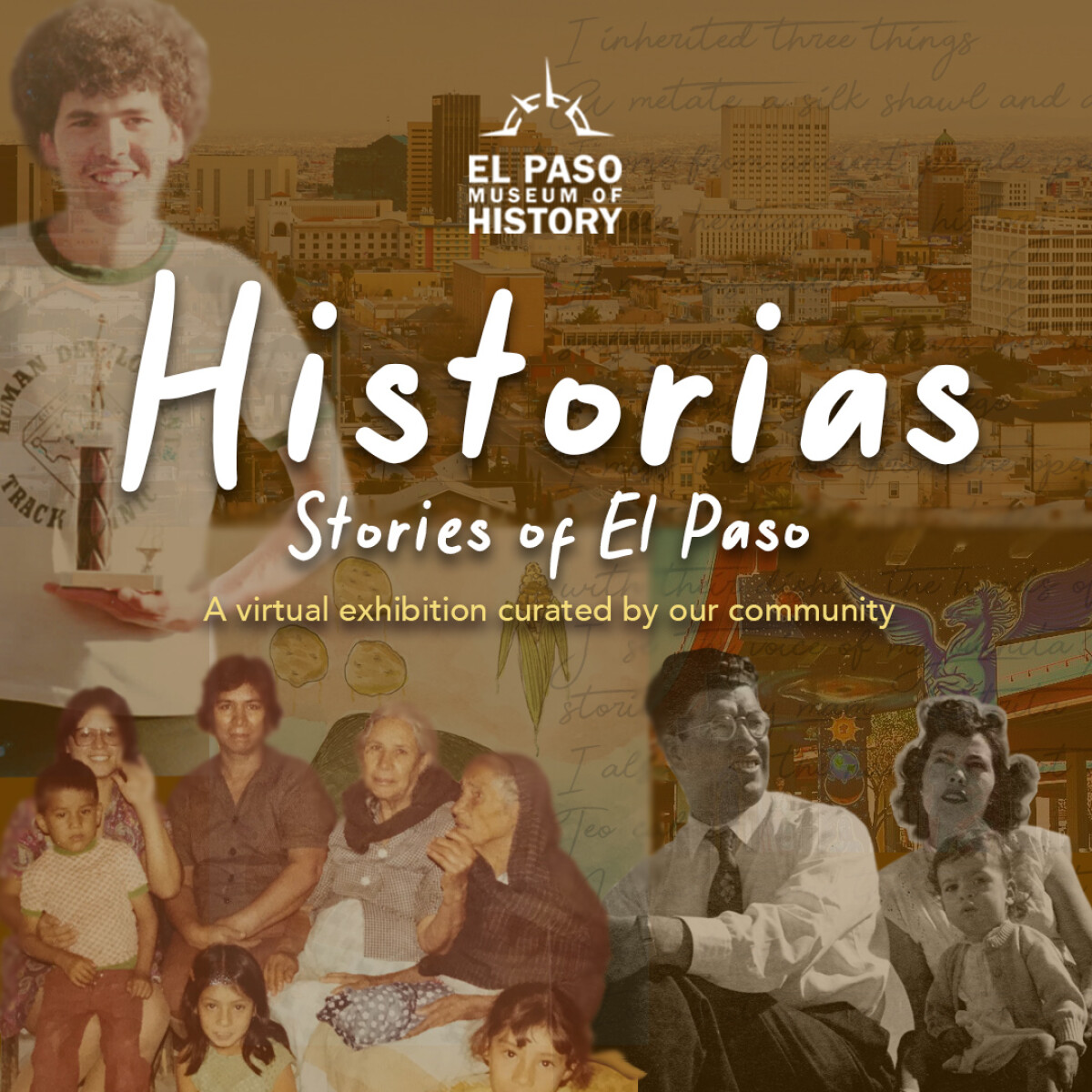
Historias: Stories of El Paso
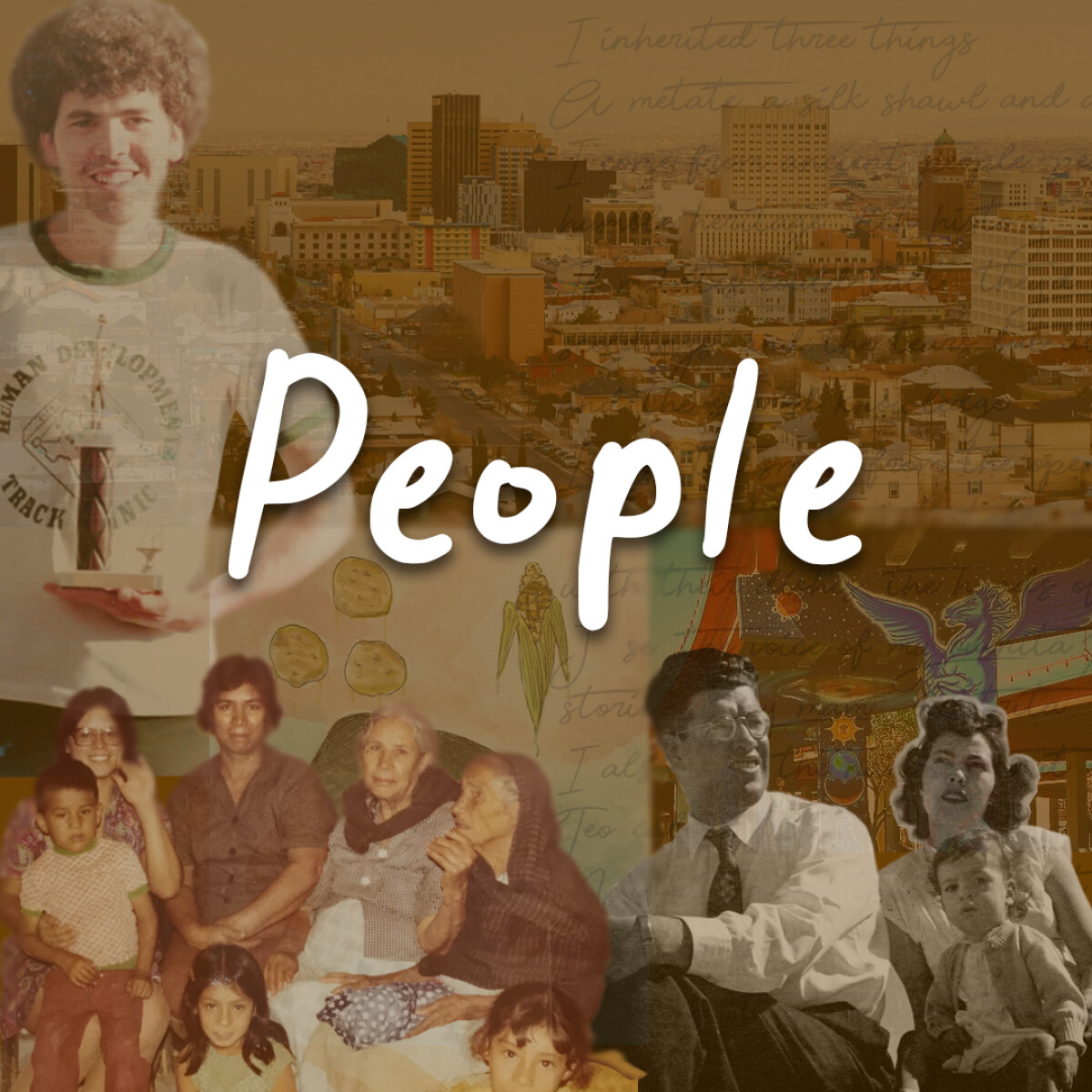
Historias: Stories of El Paso
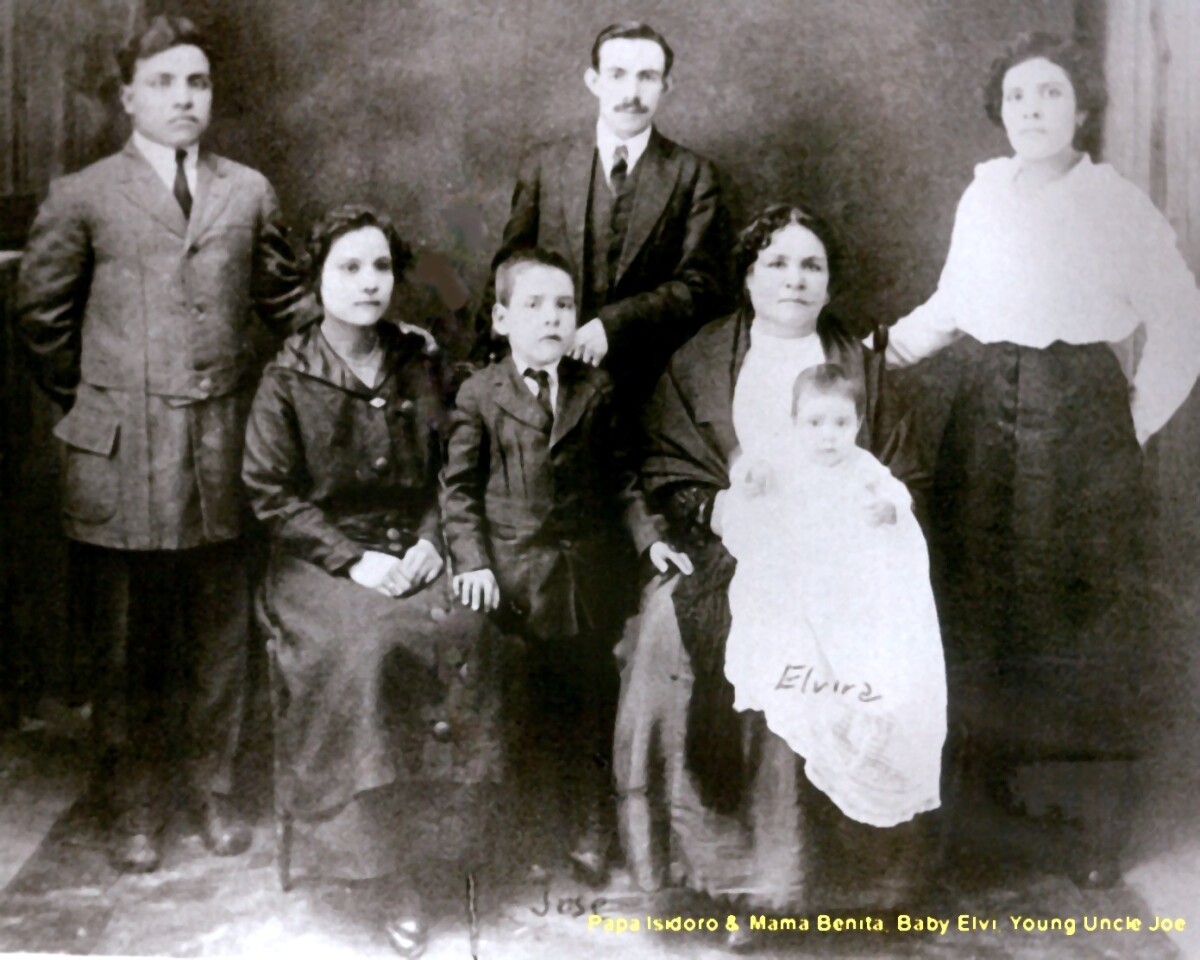
Historias: Stories of El Paso
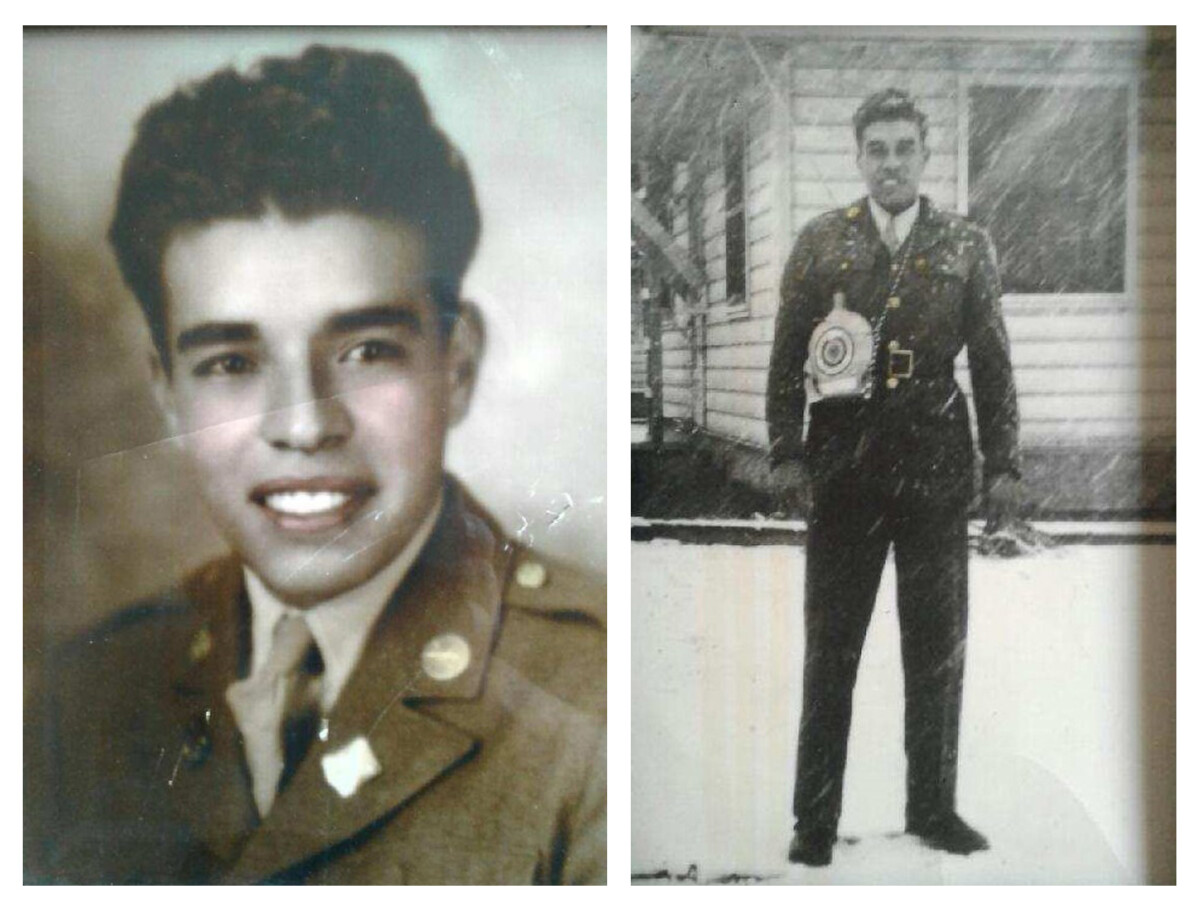
Historias: Stories of El Paso
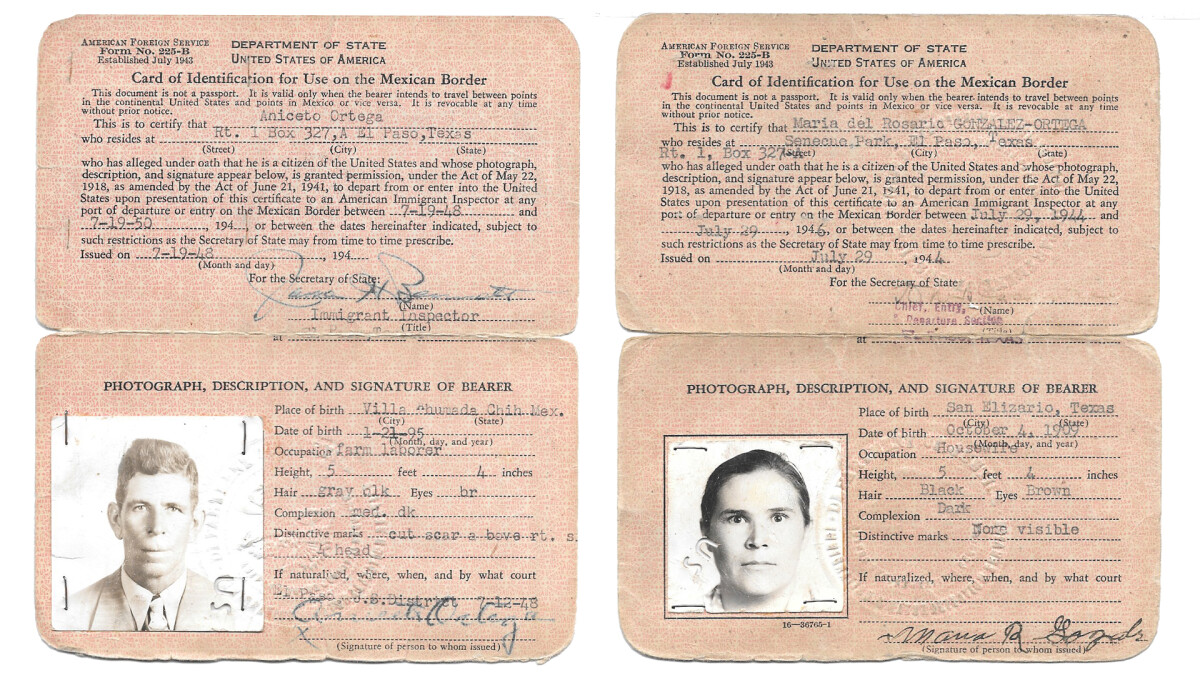
Historias: Stories of El Paso
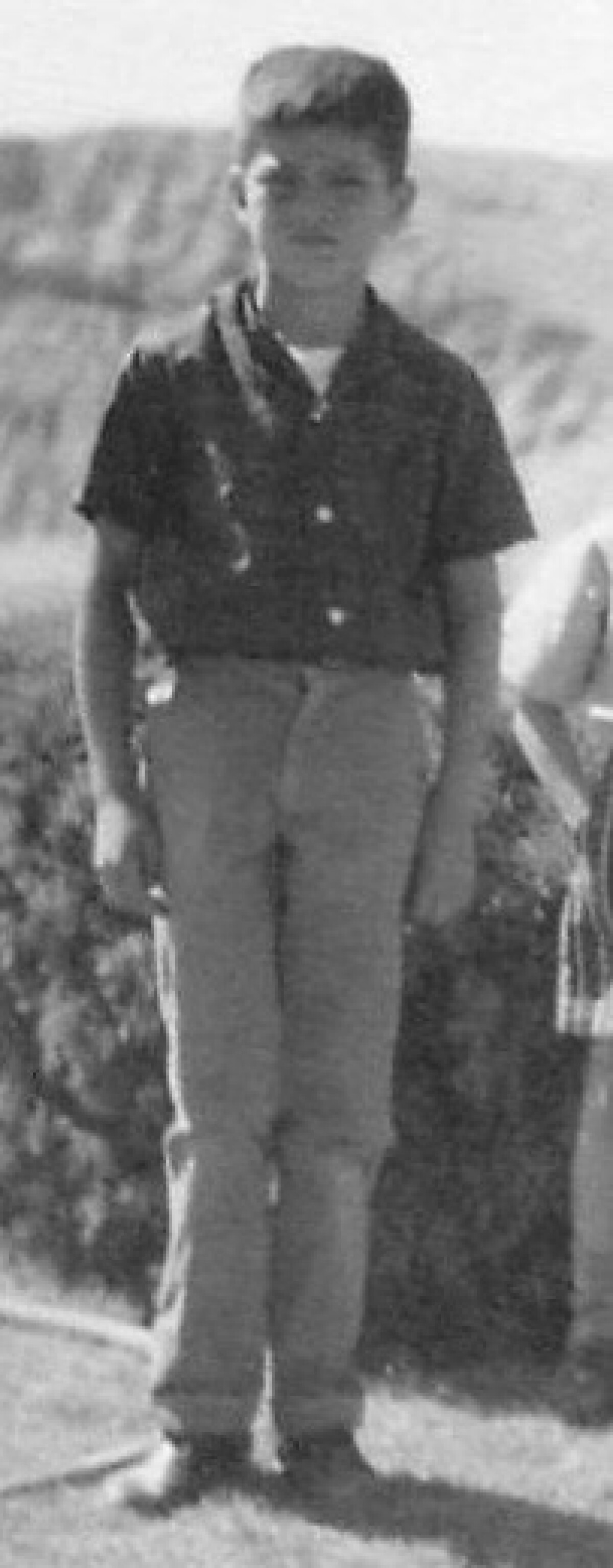
Historias: Stories of El Paso
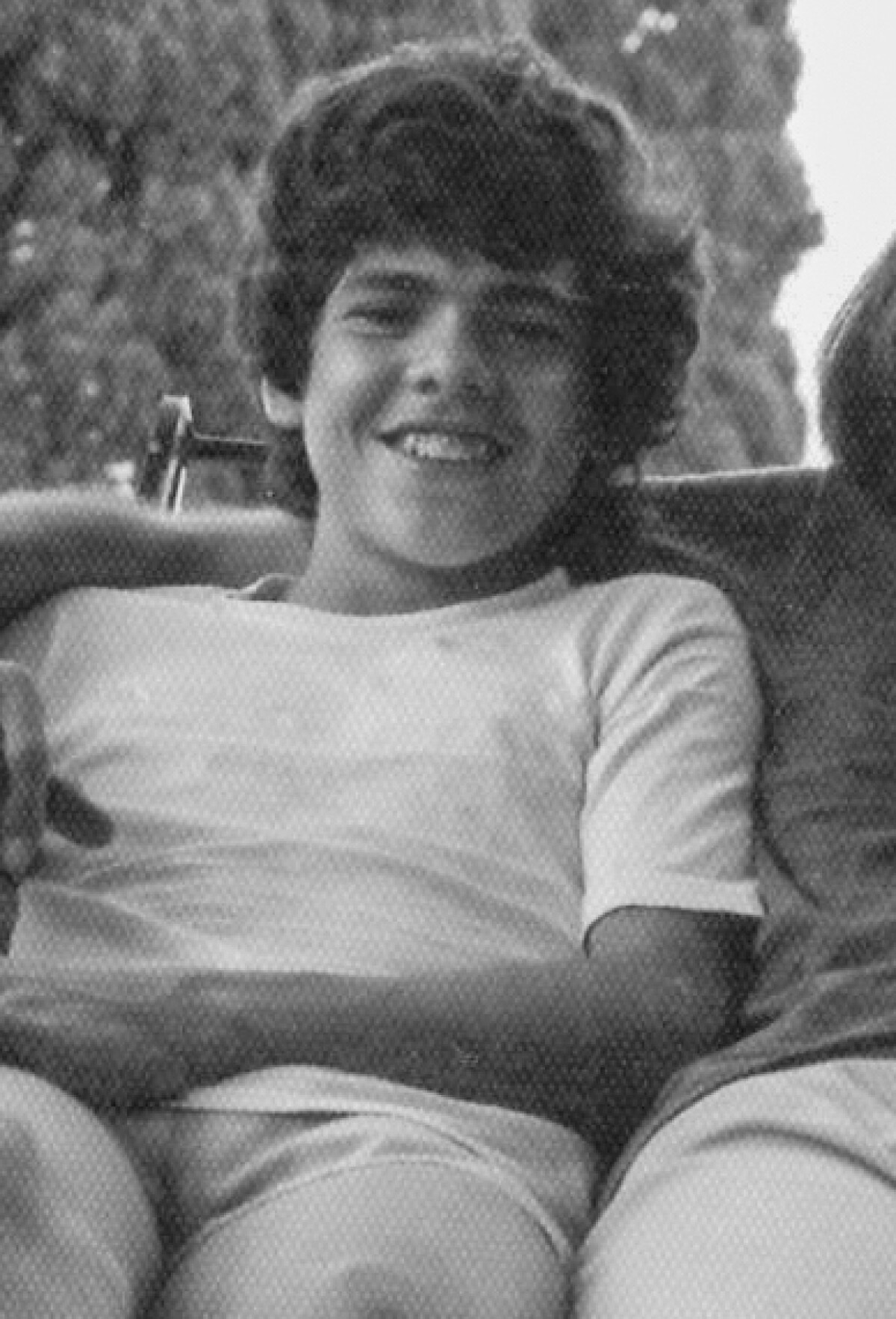
Historias: Stories of El Paso
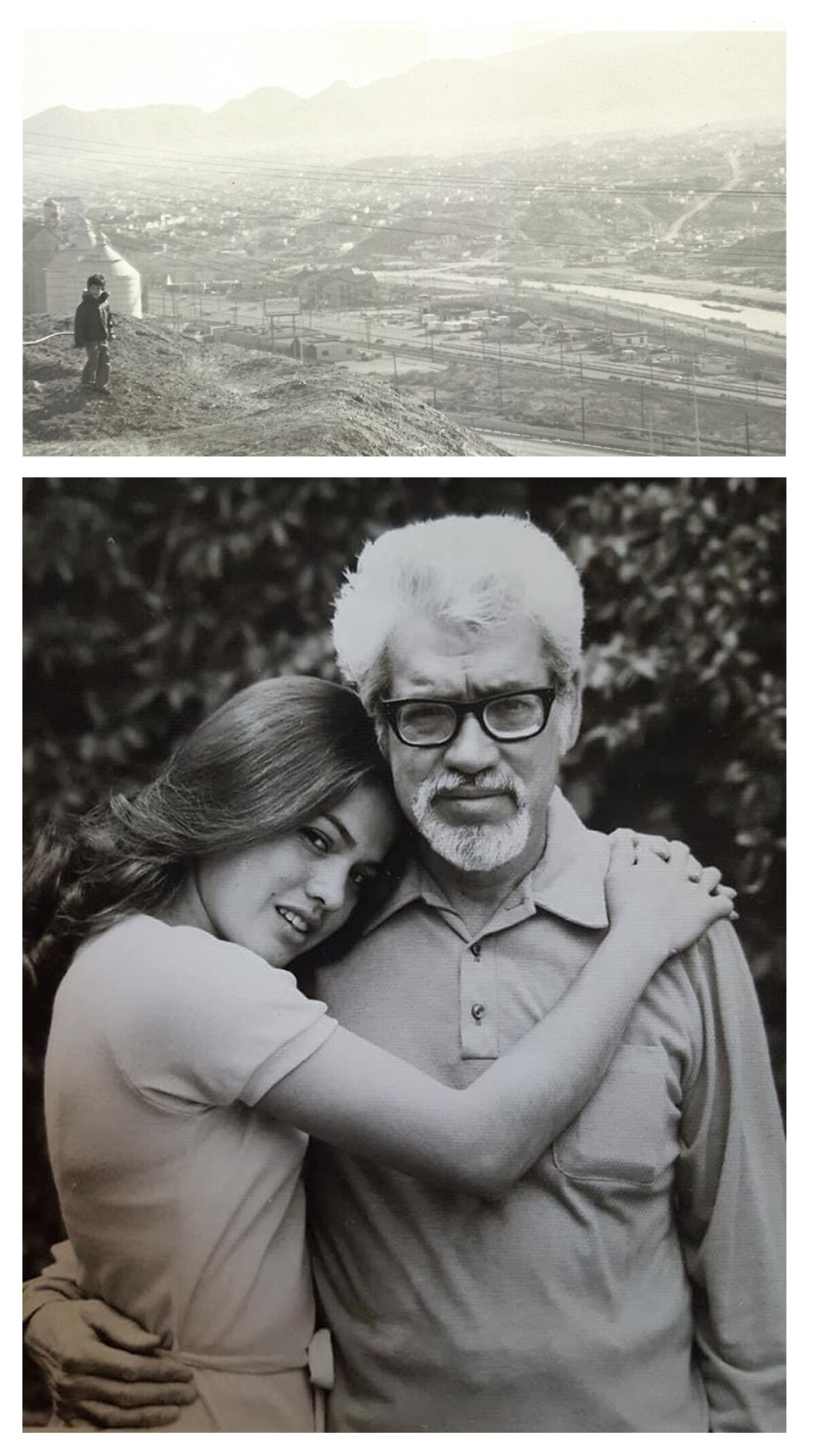
Historias: Stories of El Paso
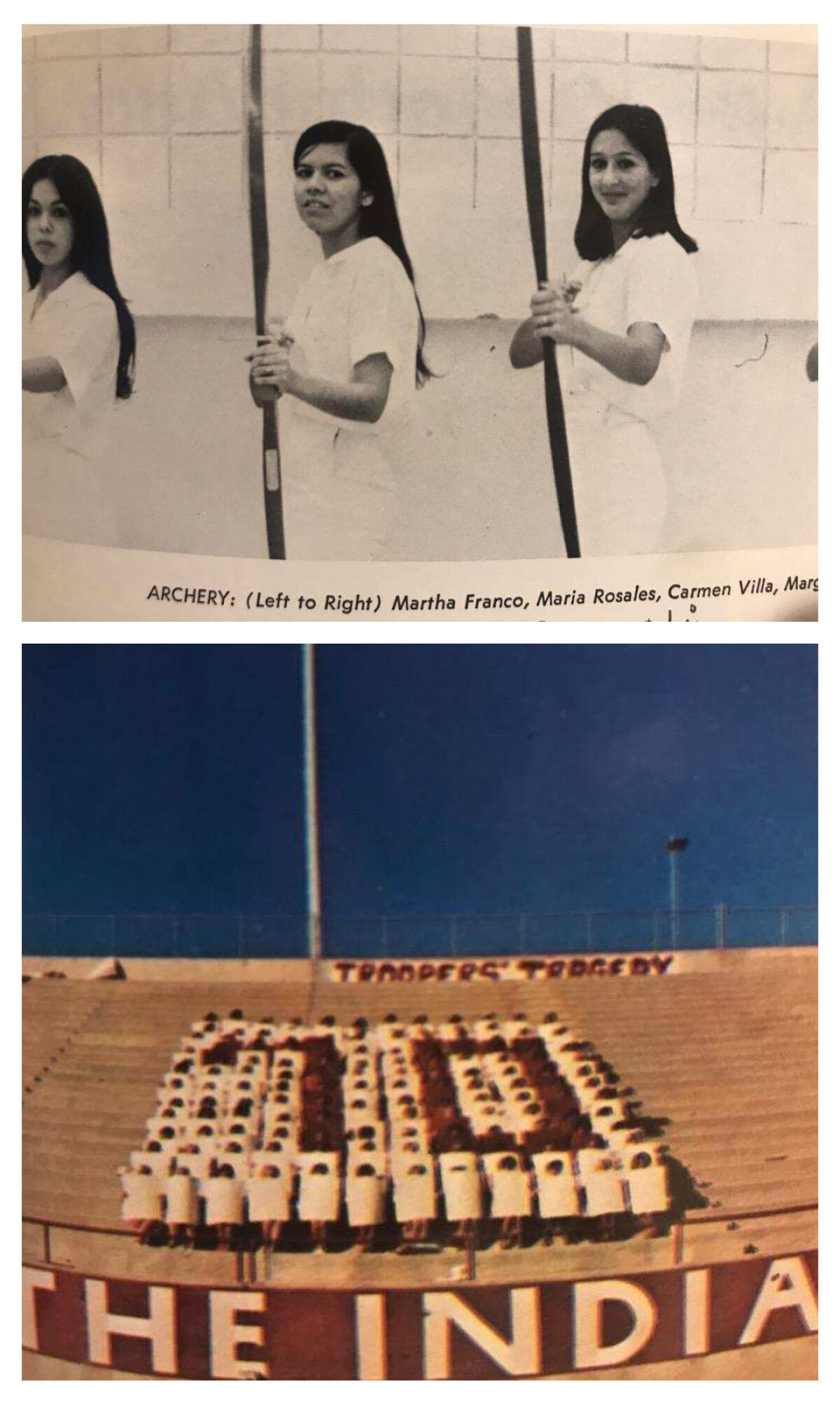
Historias: Stories of El Paso
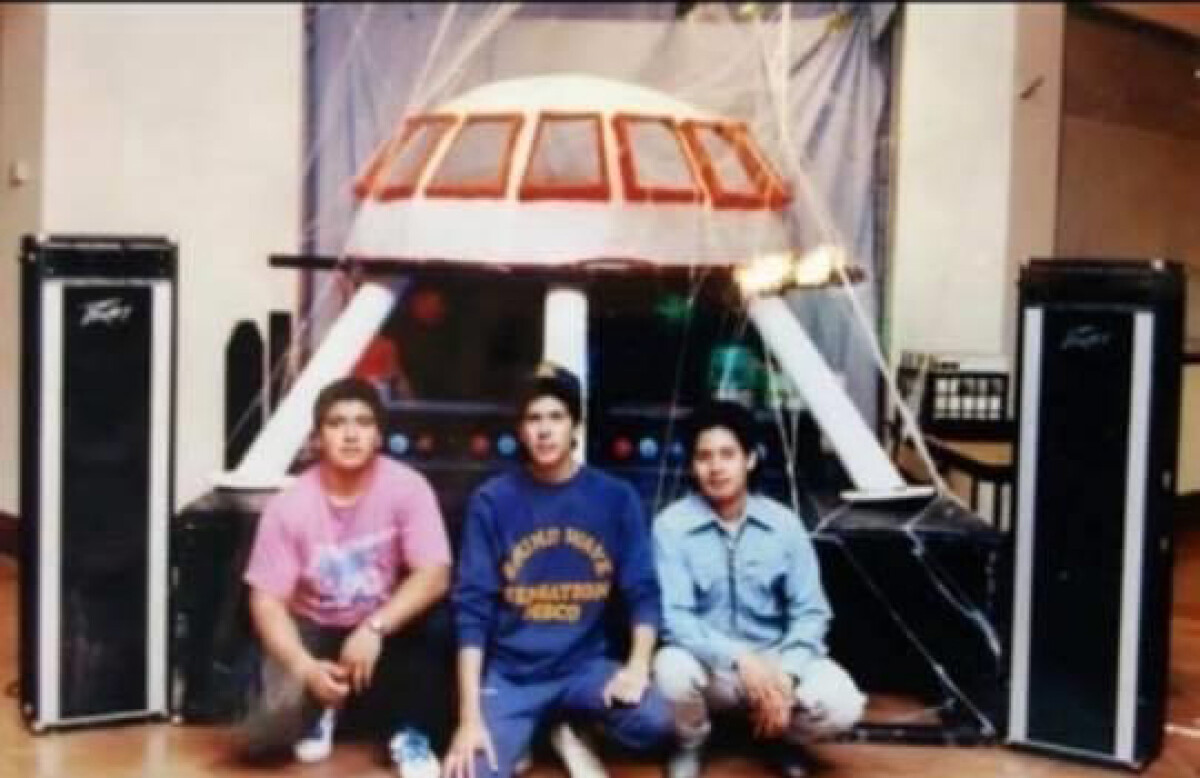
Historias: Stories of El Paso
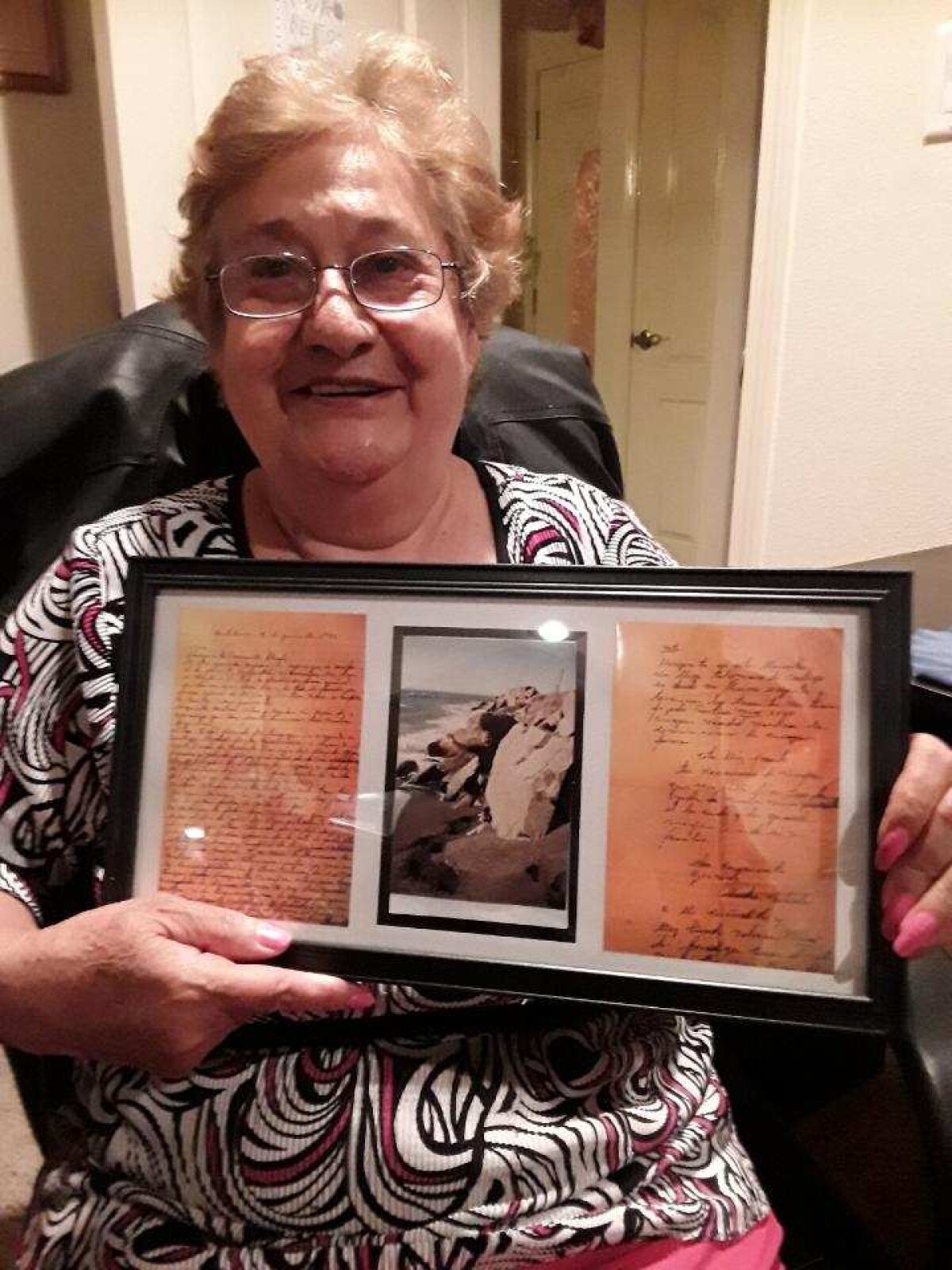
Historias: Stories of El Paso
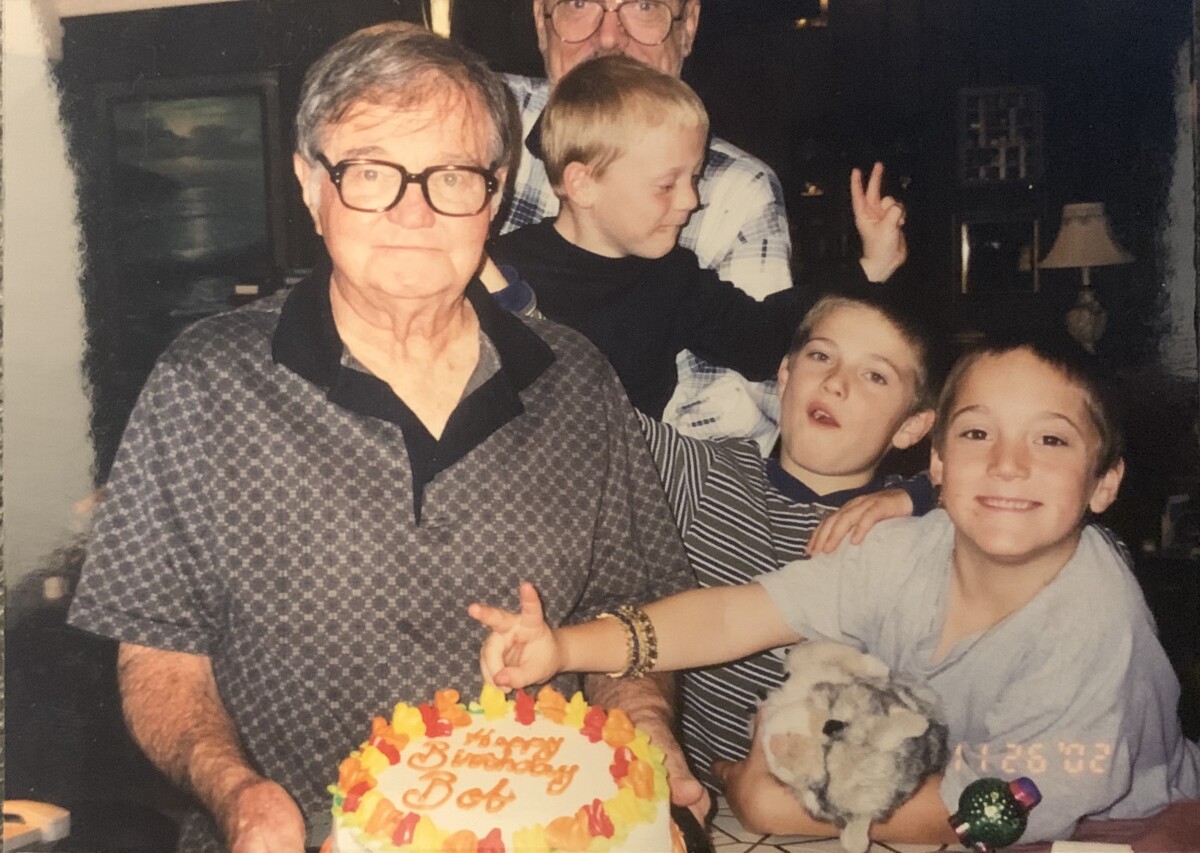
Historias: Stories of El Paso
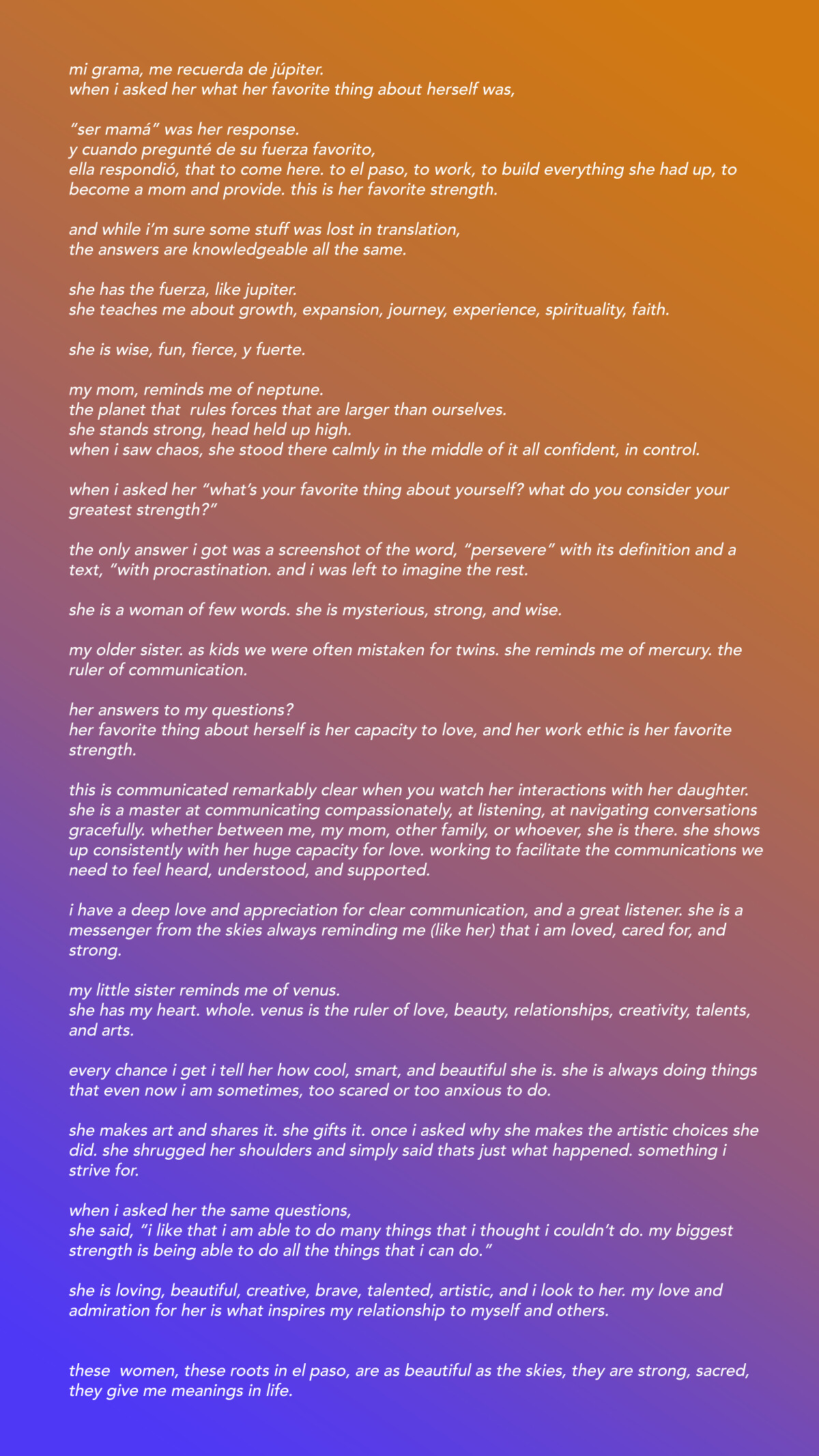
Historias: Stories of El Paso
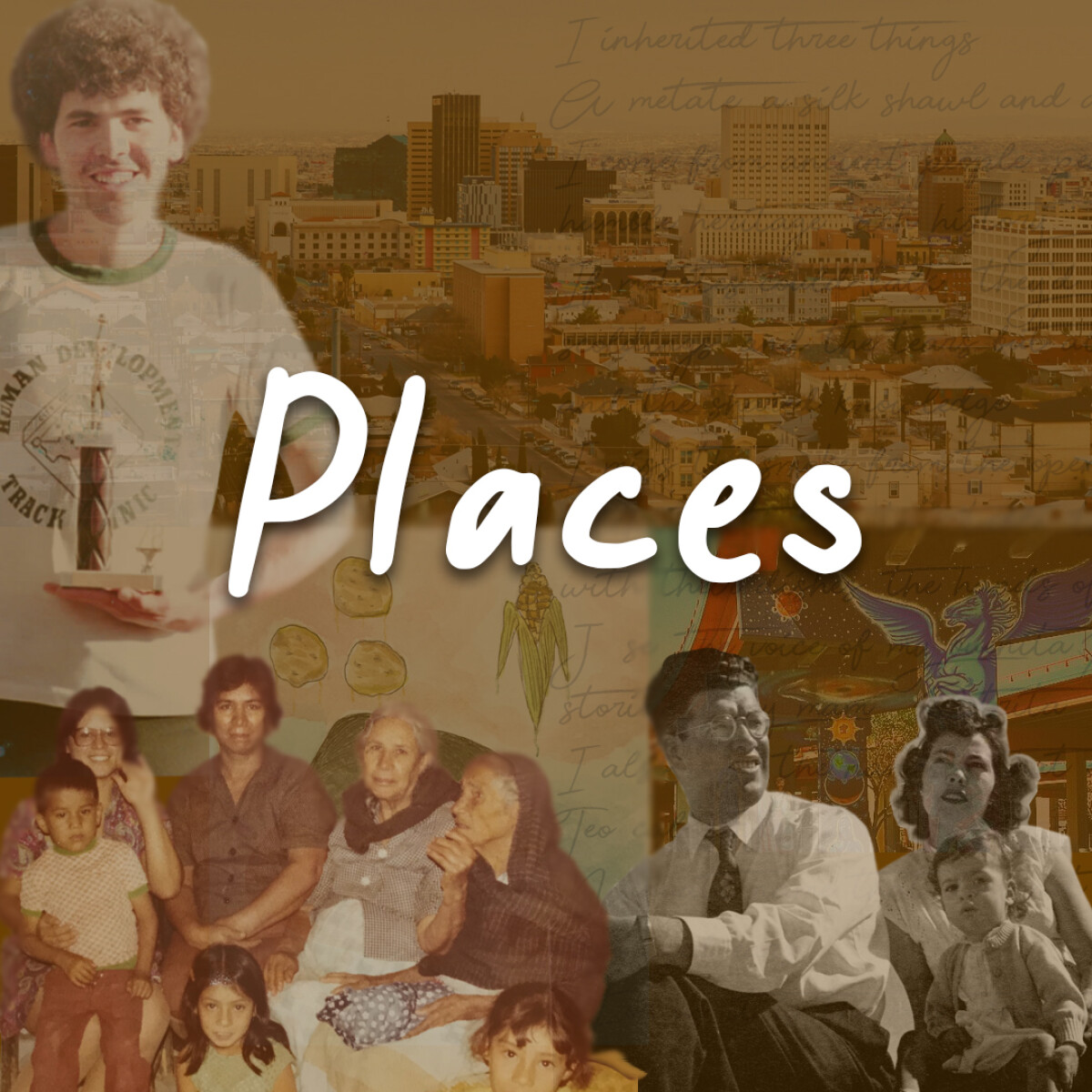
Historias: Stories of El Paso
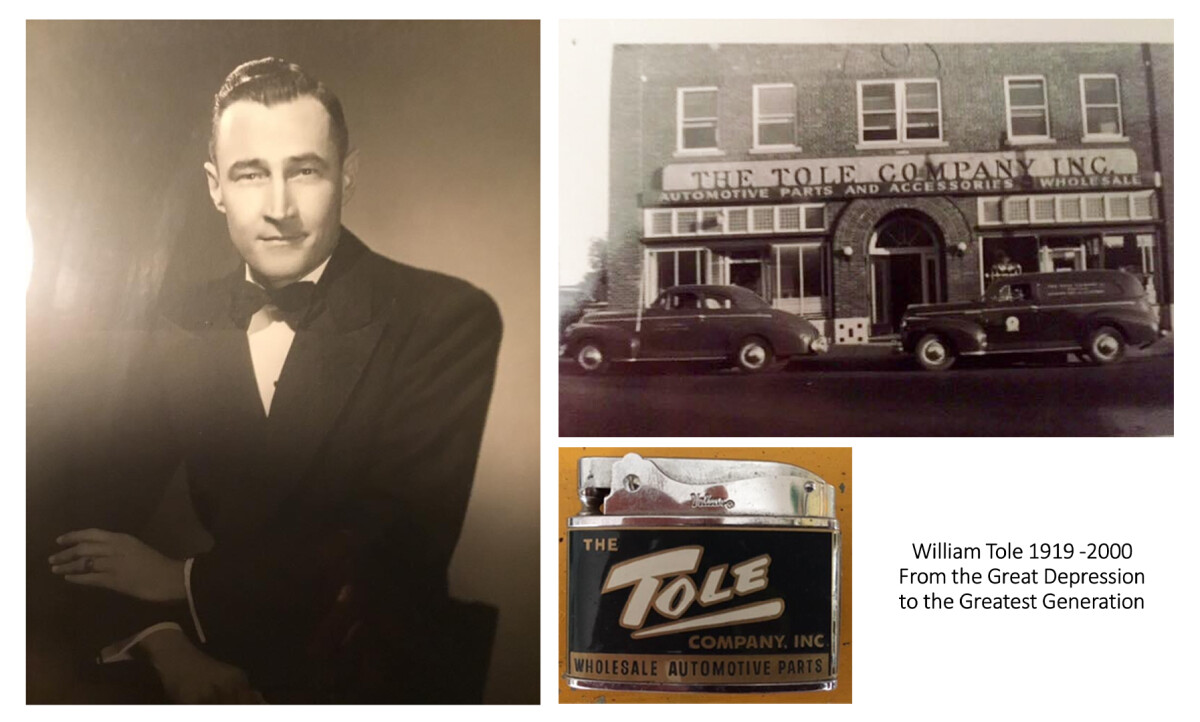
Historias: Stories of El Paso
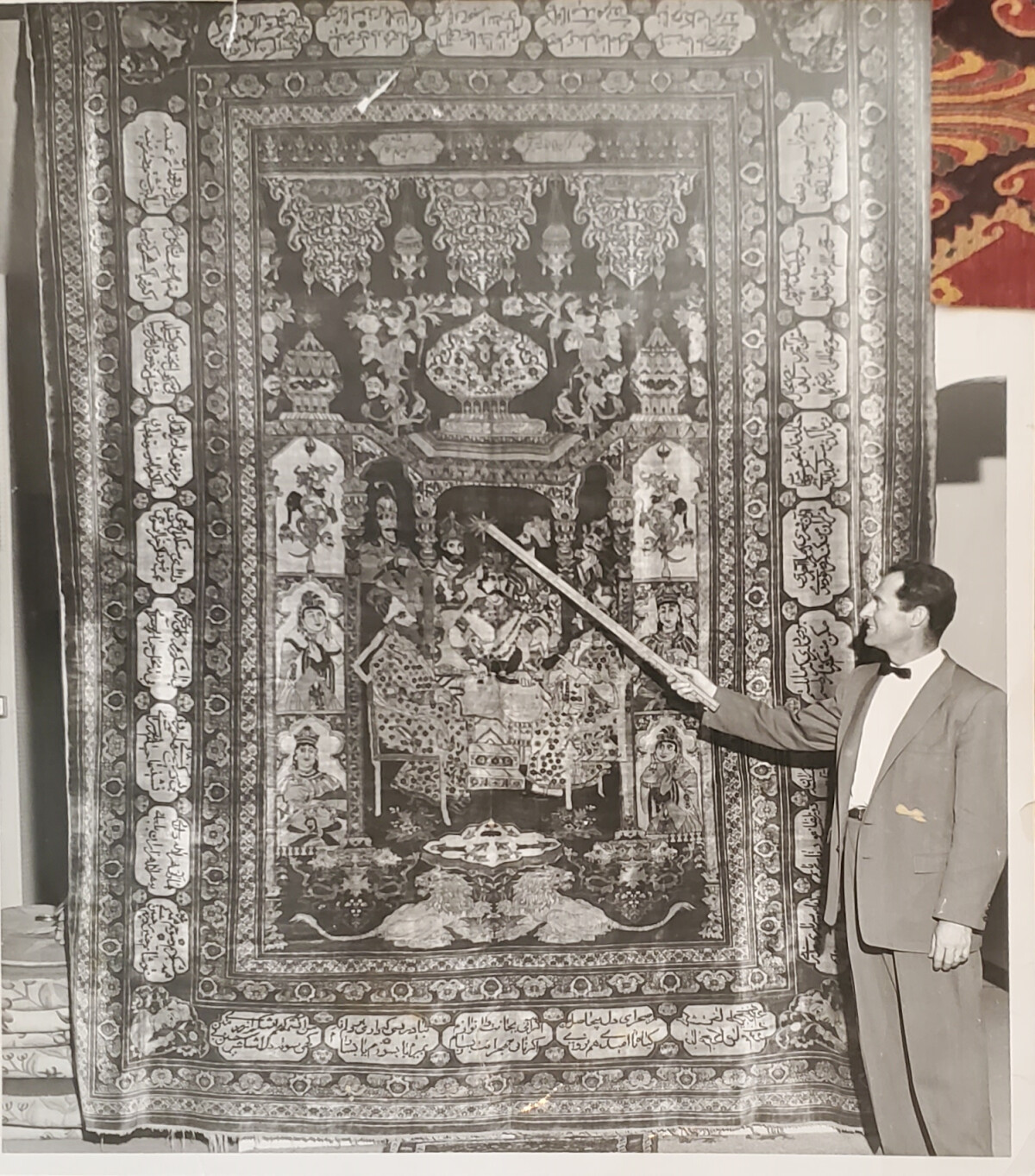
Historias: Stories of El Paso
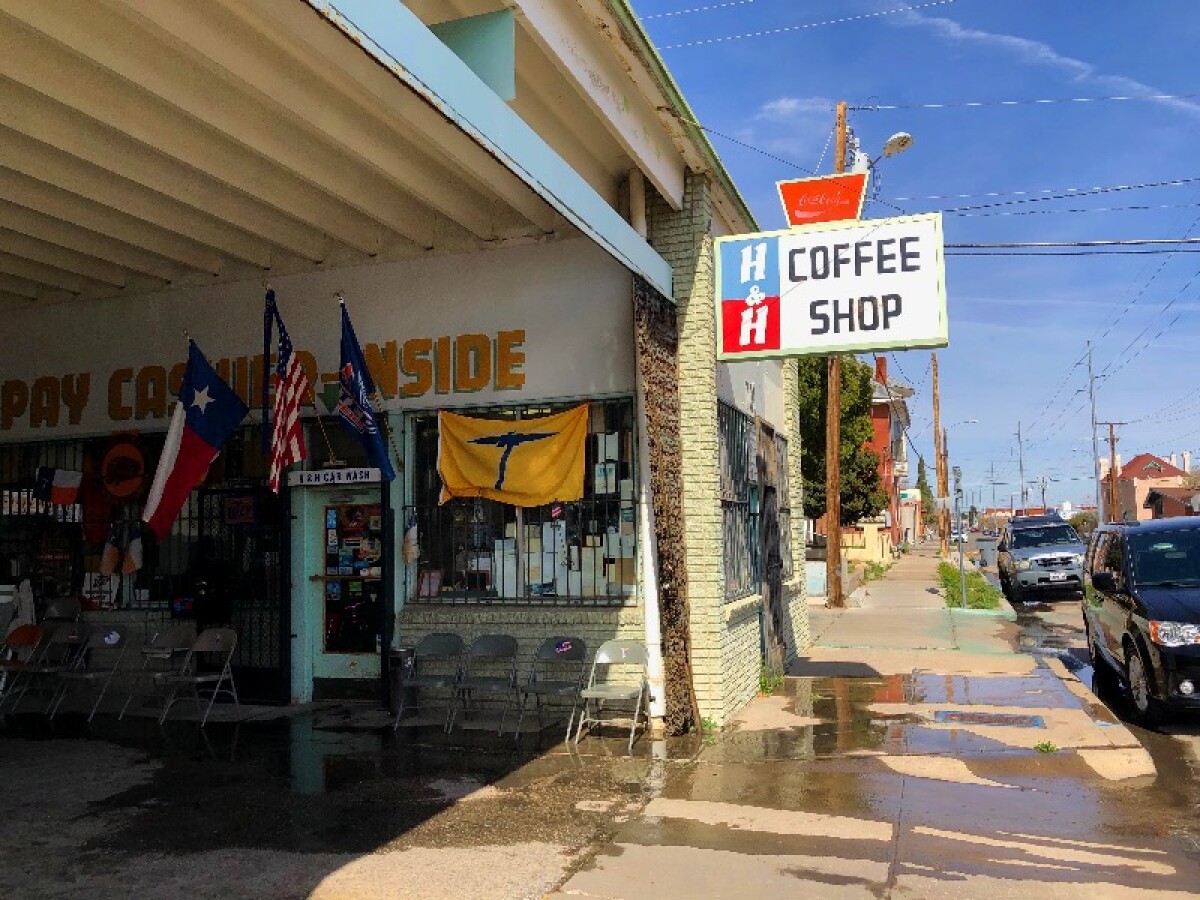
Historias: Stories of El Paso
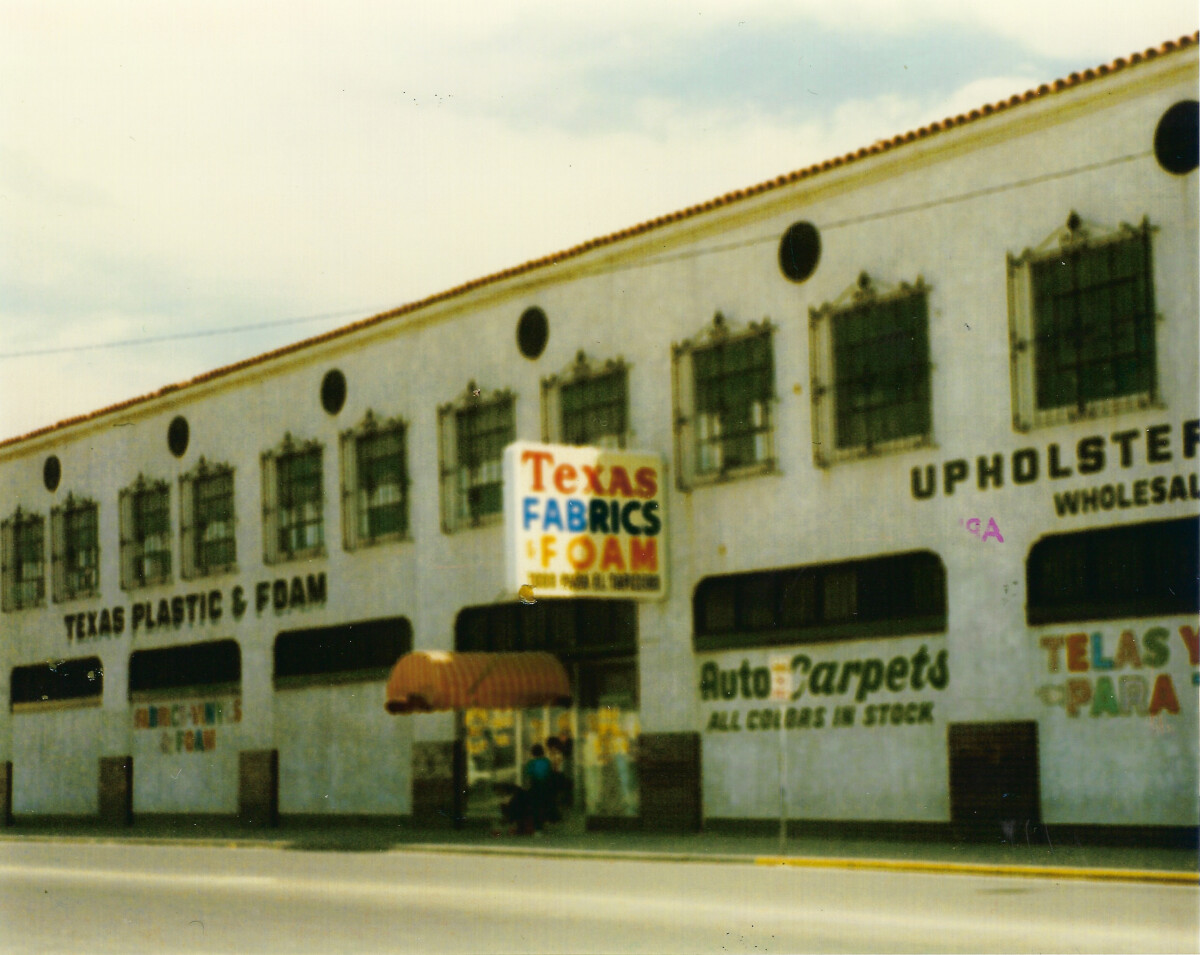
Historias: Stories of El Paso
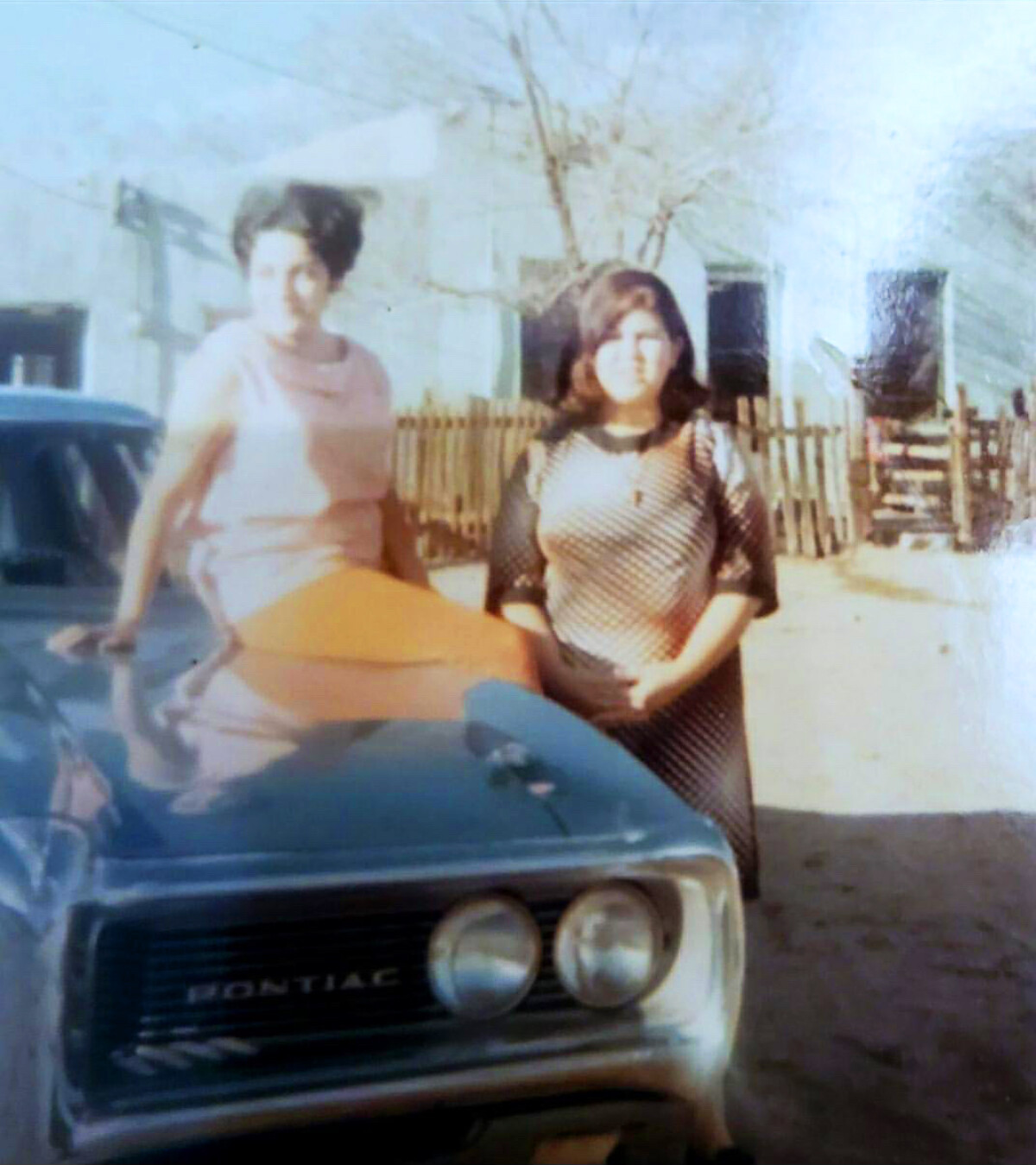
Historias: Stories of El Paso
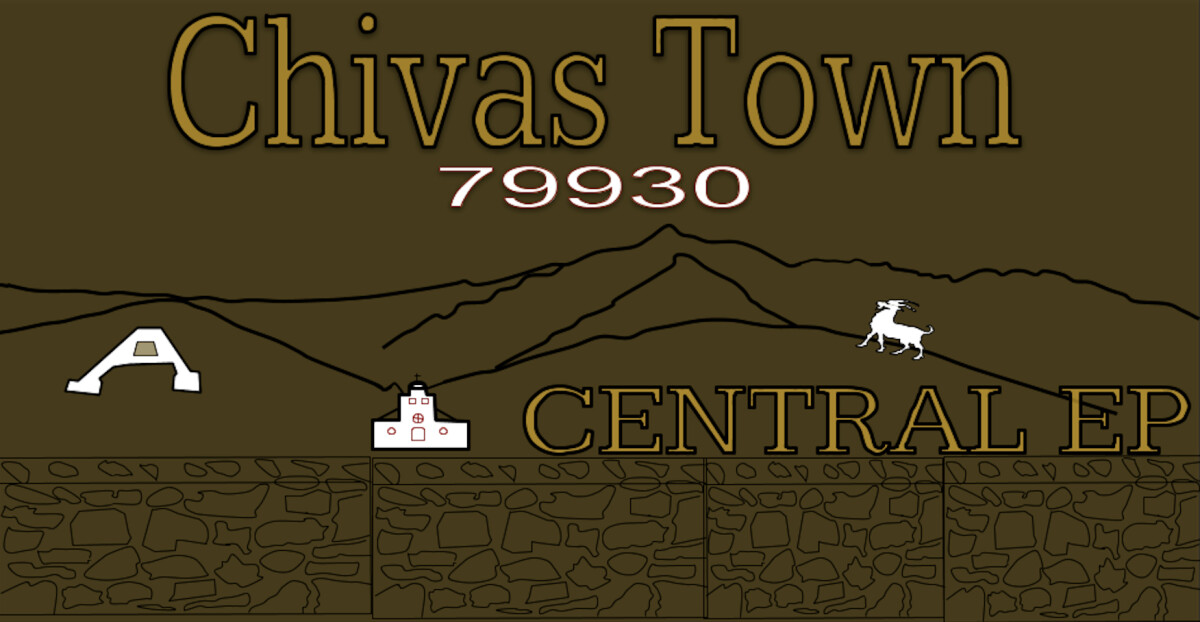
Historias: Stories of El Paso
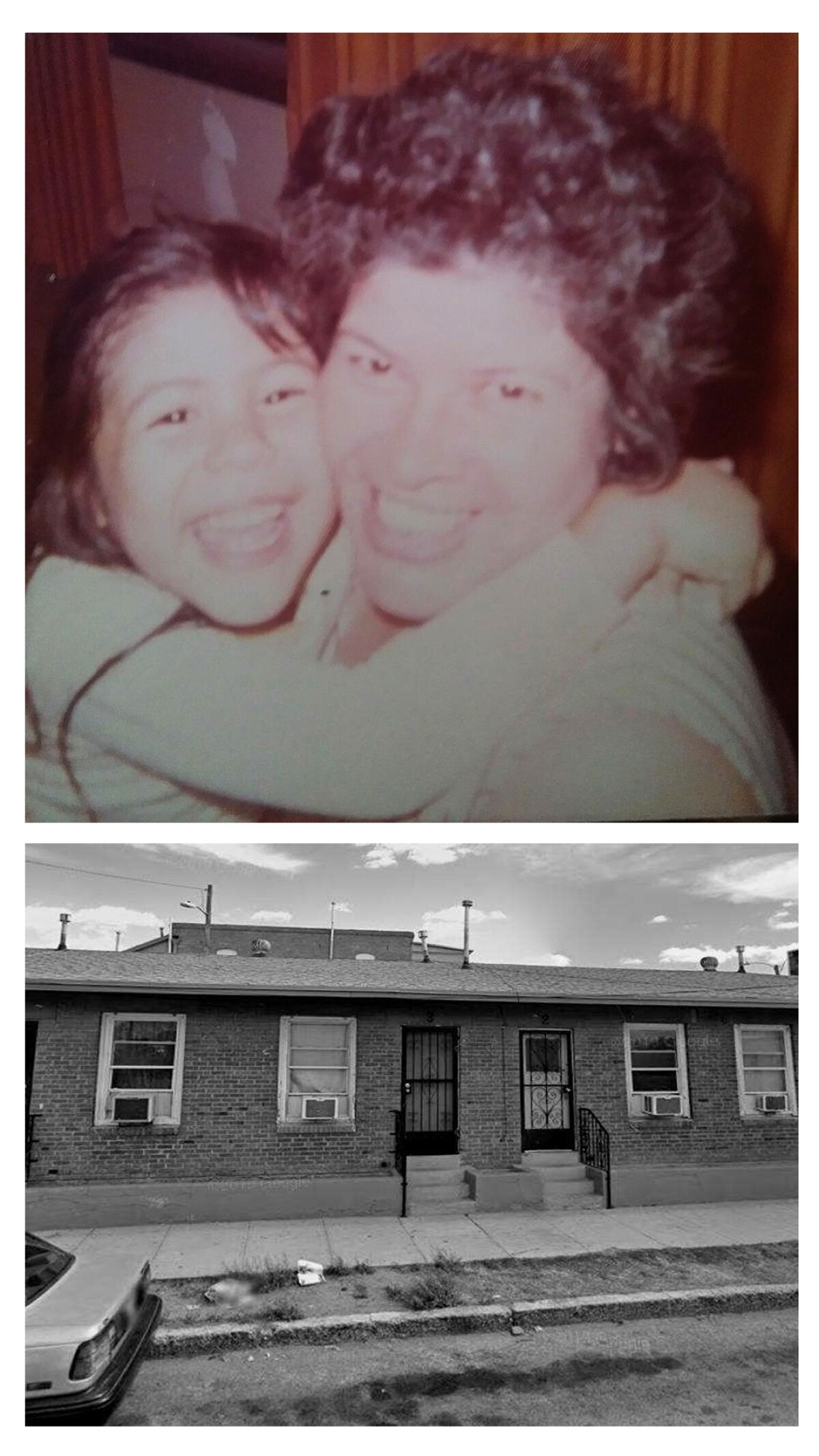
Historias: Stories of El Paso
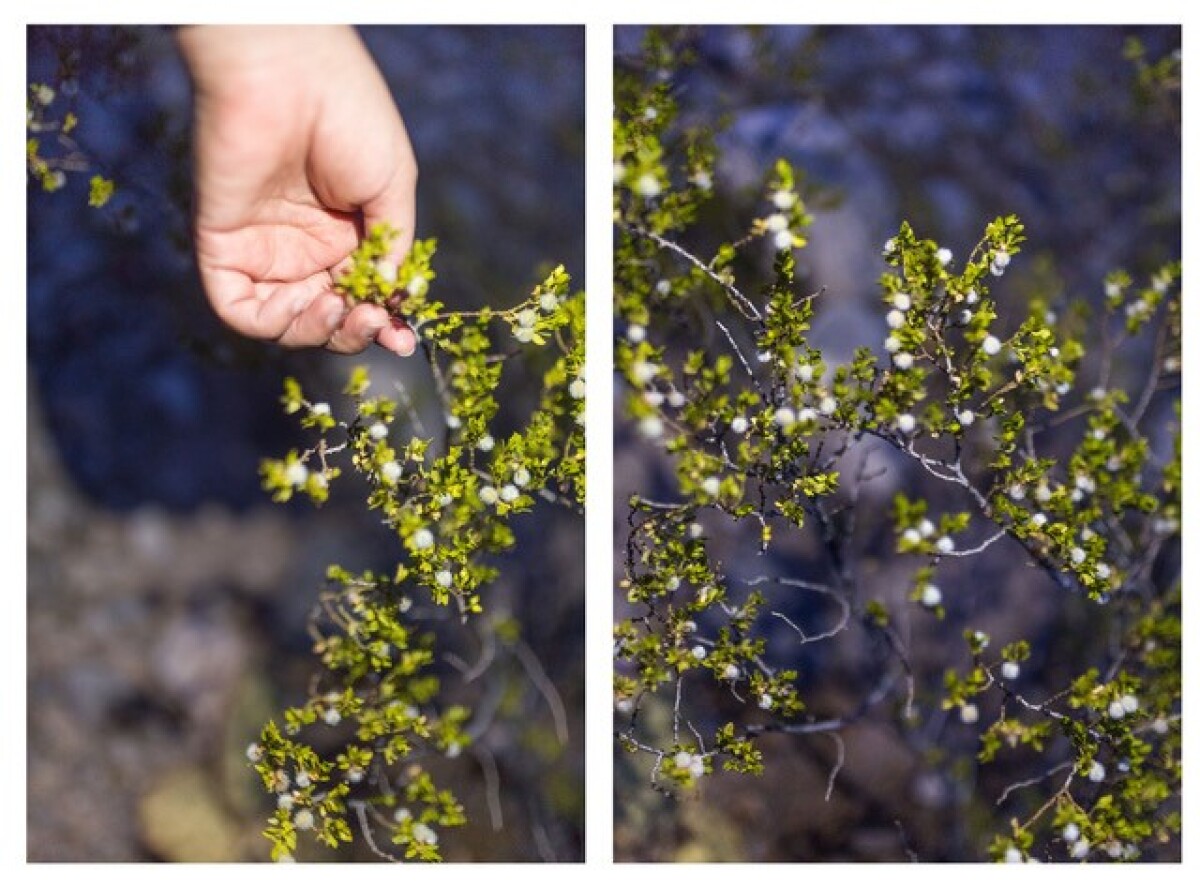
Historias: Stories of El Paso
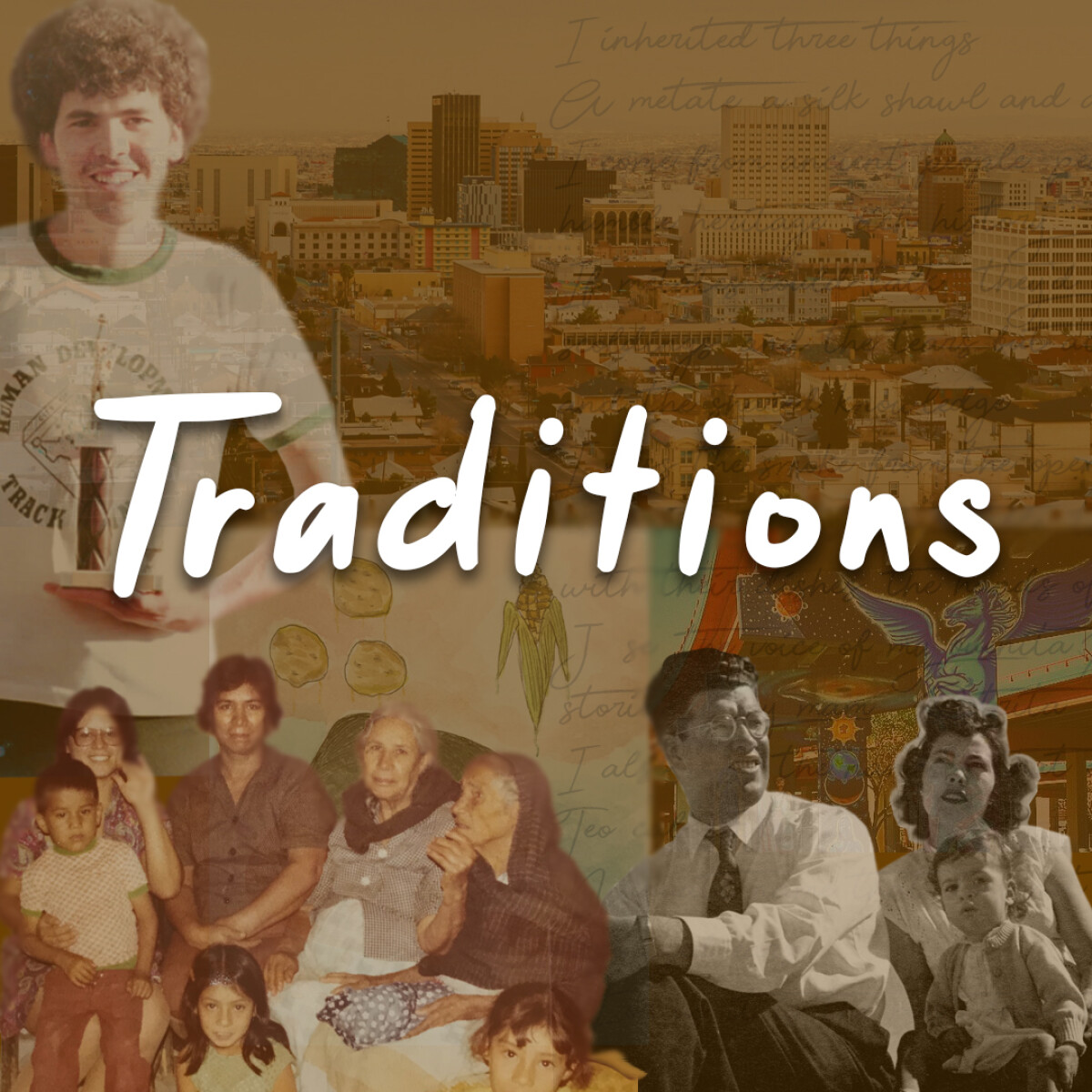
Historias: Stories of El Paso
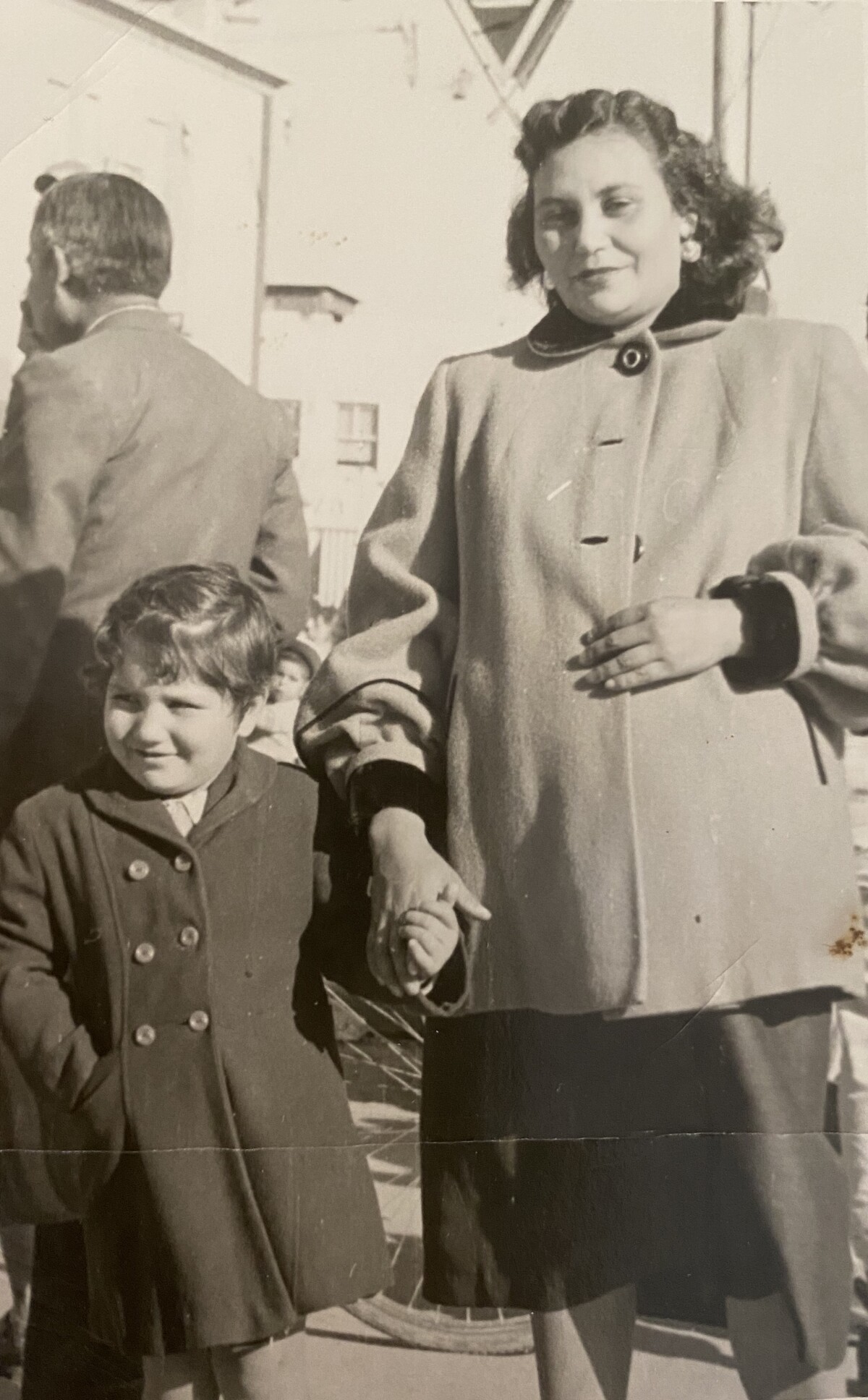
Historias: Stories of El Paso
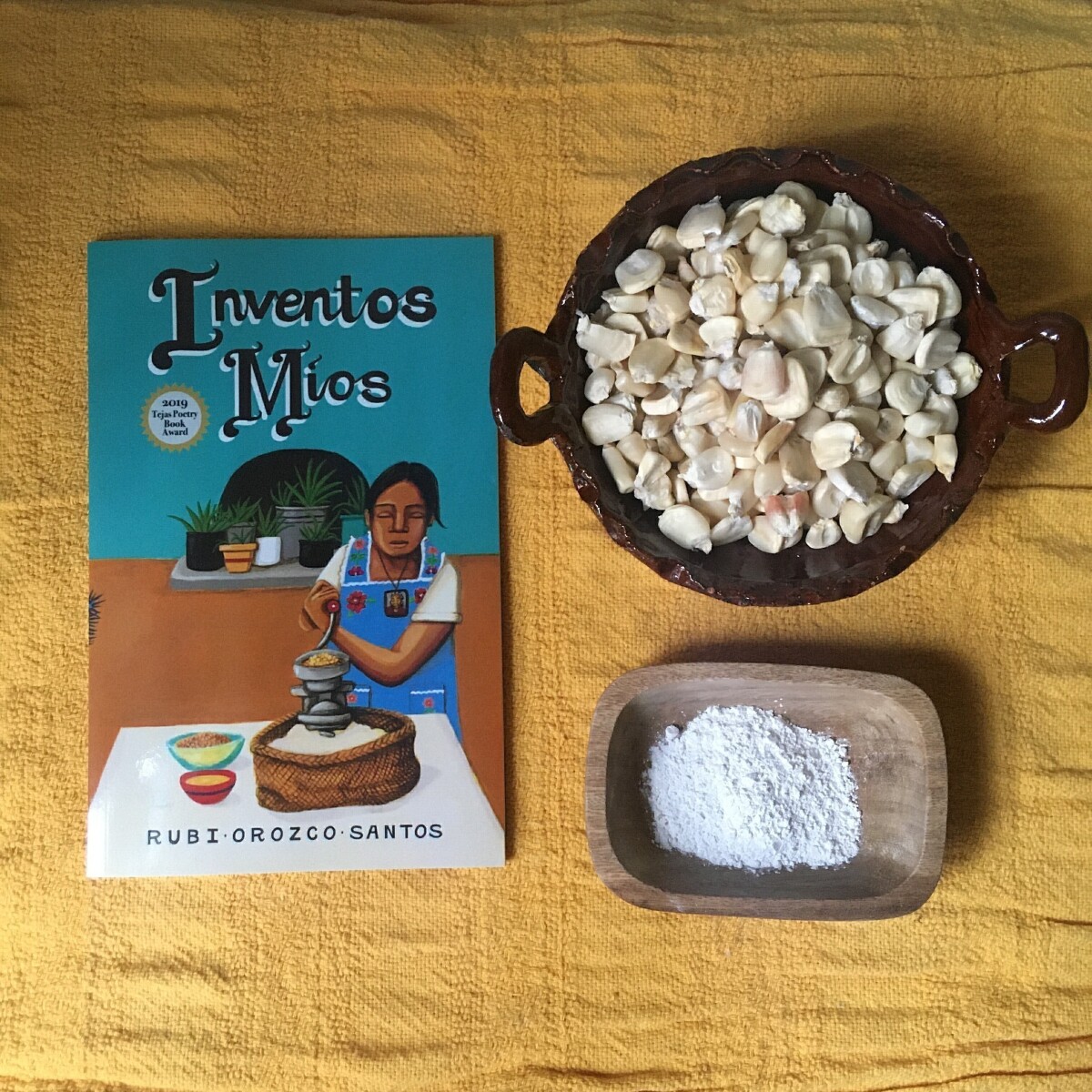
Historias: Stories of El Paso
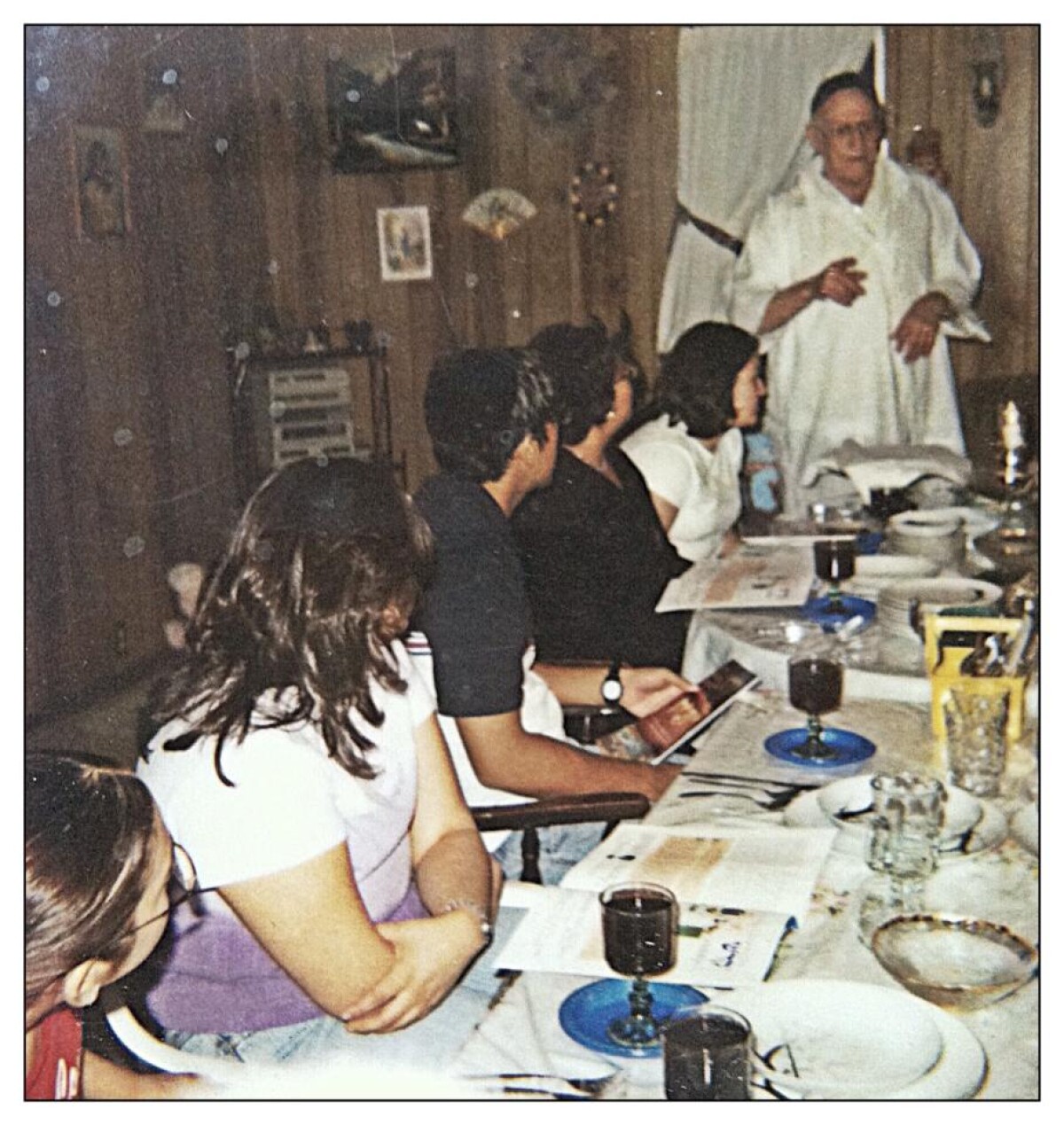
Historias: Stories of El Paso
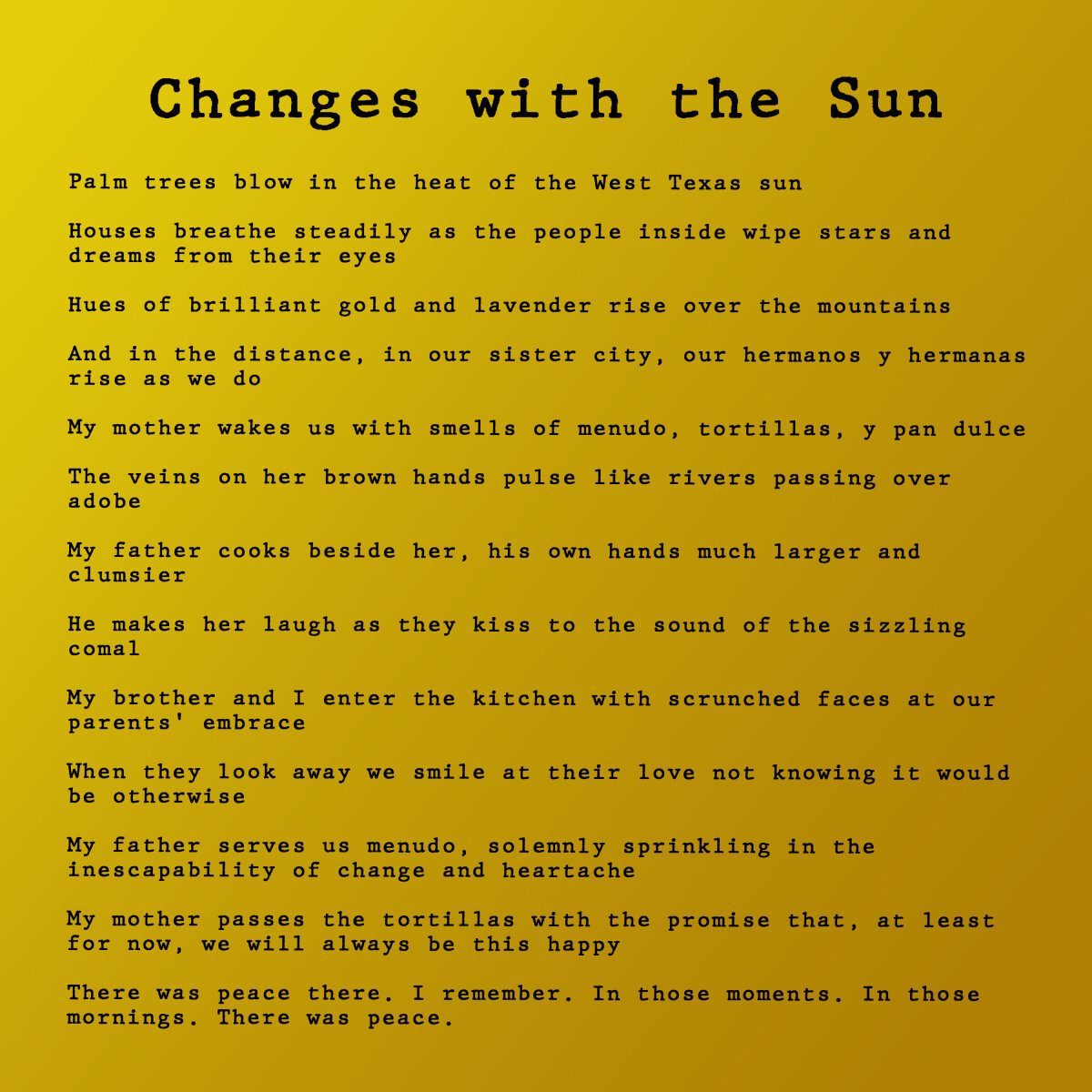
Historias: Stories of El Paso
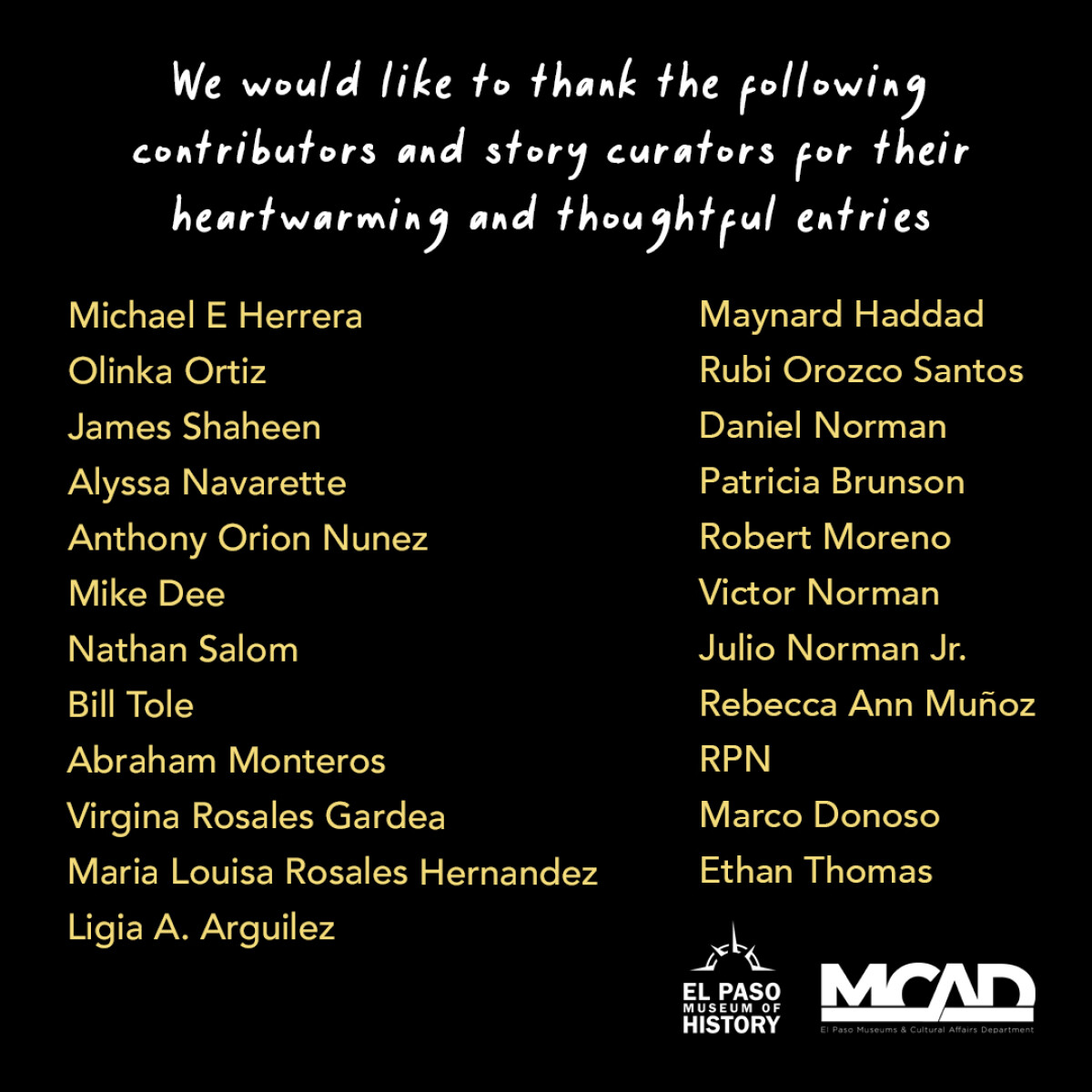
Historias: Stories of El Paso - Virtual Exhibition
Se dice que cada persona es un mundo entero. Cuando pensamos en la historia, pensamos en términos de eventos notables y personas que se hicieron famosas por esos eventos. No pensamos en la población en general y en cómo moldearon y continúan moldeando esas narrativas. Nuestras historias escritas o transmitidas de boca en boca son las que enriquecen y amplían nuestra historia de la Frontera. Historias es sobre todos. Se trata de las experiencias que nos dan forma y nos conectan entre nosotros. Compartimos estas historias de nuestra comunidad para resaltar recuerdos individuales de la vida, tradiciones, personas y paisajes. La colección de recuerdos compartidos viene en forma de poesía, relatos y fotos. Los dejamos como tales para dar a cada contribuyente la libertad creativa de contar su historia. Desplácese por cada imagen para ver la duración completa de la exposición.
Área: Central / Downtown
Fuente: El Paso Museum of History
Cargado por: El Paso Museum of History
Historias: Stories of El Paso - Virtual Exhibition
Se dice que cada persona es un mundo entero. Cuando pensamos en la historia, pensamos en términos de eventos notables y personas que se hicieron famosas por esos eventos. No pensamos en la población en general y en cómo moldearon y continúan moldeando esas narrativas. Nuestras historias escritas o transmitidas de boca en boca son las que enriquecen y amplean nuestra historia de la Frontera. Historias es sobre todos. Se trata de las experiencias que nos dan forma y nos conectan entre nosotros. Compartimos estas historias de nuestra comunidad para resaltar recuerdos individuales de la vida, tradiciones, personas y paisajes. La colección de recuerdos compartidos viene en forma de poesía, relatos y fotos. Los dejamos como tales para dar a cada contribuyente la libertad creativa de contar su historia. Desplácese por cada imagen para ver la duración completa de la exposición.
Área: Central / Downtown
Fuente: El Paso Museum of History
Cargado por: El Paso Museum of History
Historias: Stories of El Paso - Virtual Exhibition
Historias: Stories of El Paso A virtual exhibition curated by our community Courtesy of: Julio Norman Jr. Title: The Calvillo Family and The Pass to the North El Paso, Texas Historia Type: Photograph The United States has been a destination for refugees as it was for my mother’s family during the Mexican Revolution. They left a stable and prosperous lifestyle for an uncertain future in a new land. Benita, my maternal grandmother, had heard that Pancho Villa was enlisting older children and men into his revolutionary army. Her only son, Jose, was 12 and she did not want to lose him to a war. They came to El Paso and lived for a short while across Sacred Heart Church in the Baray Apartments until they bought a home in now historic Sunset Heights. It was rough at first, each taking jobs as clerks for Elias Brothers, working on the railroad, cleaning homes, and making shirts from home to make a living. The family has done well and the original home in Sunset remains in the family and is located at 641 Upson. Grandma Benita was the center of family life and her five children– my aunts and uncles, grew up to be a watch master for Lombardy, an ASARCO sheet metal worker, a jewelry saleswoman for John Silverman and the Popular, and an American Airlines inspector. The drive to succeed was ingrained in them. My aunts and uncles were great role models for this third generation American family. We learned the importance of family where many cherished childhood values and memories are made. Because of our heritage, parents Julio and Consuelo Norman, encouraged us to get our college degrees and raised a NASA engineer, a social worker, a successful business owner, an ironworker, a financial advisor, an international business entrepreneur, and a police commander. The world has always had refugees, even before the times of Christ, and always will as they seek safety, security, freedom, and a better life for themselves and their families. Our current immigration issue regarding refugees is an attest to that. The value of keeping families united is key to meeting those ideals.
Área: Central / Downtown
Fuente: Julio Norman Jr.
Cargado por: El Paso Museum of History
Historias: Stories from El Paso - Virtual Exhibtion
Historias: Stories of El Paso A virtual exhibition curated by our community Courtesy of: Robert Moreno, Vietnam Veteran, son of Manuel Frausto Moreno, WWII Veteren & Company E Member Title: Untitled Historia Type: Photograph Mr. Moreno recounts stories from his father’s years of service he was told growing up, which ultimately inspired his action to join the service as well. “Manuel Frausto Moreno was born on October 13, 1917 and passed away October 18, 2001. He was born and raised on a ranch located off of Alameda in El Paso, TX. He had 8 brothers and sisters, he was the first to enlist in the family. He worked on the ranch to help put food on the table… then he heard about CC Camp and he went to go join, it’s like a training where they had to start around 1941 or 1942 … He was in Company E and you know, they were all Mexican-American and my dad was one of them…” Mr. Moreno recalls memories of his father’s travels from CC Camp in El Paso to Massachusetts (photo in the snow), from Libya, North Africa to the Battle of Rapido River in Italy. Manuel Frausto Moreno was one of 27 men that returned from the Company E tour during WWII.
Área: Central / Downtown
Fuente: Robert Moreno
Cargado por: El Paso Museum of History
Historias: Stories of the El Paso - Virtual Exhibition
Historias: Stories of El Paso A virtual exhibition curated by our community Courtesy of: Olinka Ortiz Title: Grandparents History Historia Type: Photograph These photos are of my grandparents border crossing identification cards. They were used to allow them to cross between the United States and Mexico. These identification cards are used as a reminder of where my mothers’ family came from. It is a symbol of our heritage and culture.
Área: Central / Downtown
Fuente: Olinka Ortiz
Cargado por: El Paso Museum of History
Historias: Historias de El Paso - Exposición Virtual
Historias: Stories of El Paso A virtual exhibition curated by our community Cortesía de: Daniel Norman Título: The Paper Boy Tipo de historia: Photograph Mis padres y mis hermanos mayores me enseñaron la ética de trabajo que me guió durante toda mi vida. Cuando era un niño de unos 10 años me pidieron que ayudara a mis hermanos a entregar el periódico a los vecinos que estaban suscritos al El Paso Times y al El Paso Herald-Post. En el invierno recuerdo la tranquila tranquilidad de ser el primero en aventurarse en la nieve para hacer nuestras entregas. También recuerdo escuchar en nuestros radios de transistores la única estación de radio que transmitía a esa hora de la mañana - KOMA fuera de la ciudad de Oklahoma. Entregamos el Times a los residentes de Sunset, alrededor de la Escuela Secundaria de El Paso, así como en el área cerca de la antigua Escuela Primaria Morehead donde ahora se encuentra la escuela de enfermería UTEP. Recuerdo haber agradecido a Dios por los edificios de apartamentos en los que entré y que me dieron un cálido refugio del frío exterior. Después de completar nuestra ruta tuvimos que apurarnos a casa para prepararnos para ir a la escuela. Por las tardes repartíamos el correo en todos los mismos barrios. Unos años más tarde tomamos una ruta que incluía el centro de la ciudad. Entregué a los gerentes de Kress, Woolworth, y muchos pequeños negocios incluyendo joyerías y tiendas de ropa. Después de completar la ruta yo vendía los "extras" en la plaza. A menudo competía con los otros chicos que vendían El Fronterizo mientras gritábamos el nombre del periódico que vendíamos. Recuerdo que estaba parado en el calor del verano cuando la gente pasaba por delante de mí yendo y viniendo, pero aparentemente nunca se detenían a comprar mis periódicos. Parecía una eternidad antes de que finalmente vendiera mi último ejemplar.
Área: Central / Downtown
Fuente: Daniel Norman
Cargado por: El Paso Museum of History
Historias: Stories of El Paso - Virtual Exhibition
Historias: Stories of El Paso A virtual exhibition curated by our community Courtesy of: Victor Norman Title: Younger Years Growing Up “Sandlot Friends” Historia Type: Photograph When I was young (4-6 grade) I had friends similar to the Movie Sandlot. During football season after the Sunday Dallas Cowboy game on TV, we would meet at the El Paso High School football stadium to play tackle football. We were very good and sometimes played against neighborhood kids from Vilas and Mesita (local elementary schools) and whooped them. My teammates were Oscar Lopez, Mike Guzman, Hector Torres, etc. Life back then was not injury free; as I suffered a severe ankle sprain, Oscar hit his back on a fence and had to be carried home, and we would all just sit and rest after the game on the grass moaning. Nonetheless, we were always back in school on Monday morning. Christmas back then was fun with my Sandlot friends. Oscar Lopez would get new toys and I would get used toys. One year we both got “new” bikes. Oscar got a brand spanking new banana bike with chopper handlebars and mine was a used bike previously owned by the vejitos to get groceries. Oscar liked my bike so much, he would swap with me to go riding around the neighborhood for hours. We would switch back before getting home. My friend Mike Guzman was an explorer. He bought a 10 cent flashlight and persuaded me to go into the drainage pipes in the mountain from Schuster to Rim Road. We were young, adventurous, and verdant. We knew absolutely nothing about flash floods. When my sister Cecilia was old enough to attend 1st grade (I was 3rd grade), I would take her with us into the pipes. We would get home late as school would let out at 2:45 for 1-3 grade; we would arrive home at 5. Mom never really noticed the time and we are still alive, so “no” we did not drown from the flash floods. All my Sandlot friends hung out together until 8th grade; our next phase in life at El Paso High School we all separated ways. Daniel Williams is now in the symphony in Australia, Charles Patterson is well established doctor in the mid-west, and I became a mechanical engineer from UTEP. I worked at Texas Instrument for many years. But we all still reminisce the good ole days: our Sandlot years.
Área: Central / Downtown
Fuente: Victor Norman
Cargado por: El Paso Museum of History
Historias: Historias de El Paso - Exposición Virtual
Historias: Stories of El Paso A virtual exhibition curated by our community Courtesy of: Patricia Brunson Title: Jesus Norman Historia type: Photograph Tomé esta foto alrededor de 1979 mientras caminaba por las montañas cerca de UTEP con mi sobrino, Jesús René, cuando tenía unos 17 años. Estábamos mirando el Río Grande hacia Ciudad Juárez. Nos visitaba con mi hermano y su familia desde Van Horn, TX. Jesús y yo hablamos sobre las diferencias en las rocas, sobre lo que los trenes podrían estar llevando - a dónde podrían ir, buscamos lagartijas de movimiento rápido y observamos el lento ritmo del río que fluye abajo. En ese río, vimos a Los Cruzados moviéndose con cautela en las aguas poco profundas, saco en mano, dirigiéndose a "nuestro lado" del mundo. Como los lagartos, se desvanecerían rápidamente de la vista. Intenté decirle a Jesús lo que mi madre siempre nos enseñó, rezar una oración por Esos pobrescitos, pero era demasiado pequeño cuando cerraba los ojos, para hacer más que mover los labios sin decir nada mientras rezaba, " Cuídalos Señor y que encuentren trabajo". Mi hermano mayor me había dado una cámara Nikon. Este día en particular, Jesús y yo fuimos a vagar por una aventura fotográfica. Esta foto es débil en composición y calidad, pero la elegí porque resume la vida aquí en esta polvorienta frontera. Aquí, lo que parece sombrío y empobrecido es... nada de eso. Lo que podrías ver como suciedad, para nosotros, es vida! La frontera es ese lugar místico entre aquí y allá, donde el ganador del Premio a la Calidad de Vida - a mis ojos, siempre terminaba en un empate. Ese lado era divertido, así que, ¿cómo es que realmente lo tenemos mejor aquí? Como una niña pequeña en los 60, siempre fue una aventura emocionante cuando mi padre me llevaba a ese lado como su compañera, por cualquier razón; para visitar a sus amigos que tenían gasolineras, puestos de comida para los víveres, y cantinas para lo que mi padre decía que eran "refrescos". Cuando era una joven "Reina del Baile" a finales de los 70, mis amigos y yo bailábamos toda la noche "allá", donde la vida parecía tan mundana, los clubes tan exóticos. Pedíamos Brandy Alexanders, servidos en bandejas de plata por caballeros mayores con toallas blancas y nítidas sobre su brazo de servicio, usando chaquetas de esmoquin. Nos llamaban "mijita" como un viejo tío vigilante que se aseguraba de que nadie se excediera o fuera demasiado amistoso, pero nos daba la libertad de agitar nuestra ranura hasta que lanzábamos la precaución al viento y bebíamos un galón de agua de Juárez. Durante el día, pasábamos horas al aire libre practicando deportes en el clima perfecto del mundo. ¿Demasiado calor? No para nosotros, ratas del desierto que pasaban por Scenic Drive a las 3 p.m. en septiembre y bebían de las mangueras de las exuberantes casas de Rim Road. Sin embargo, la mejor parte de la vida eran las reuniones con la familia: hermanos, viejitos y primos. Teníamos asados, bautizos, cumpleaños, bodas y celebraciones de los hombres de servicio que volvían a casa. Estar con la familia era lo mejor que la vida tenía para ofrecer. Los ancianos se iban, nos besaban en la frente y decían, "Dios los bendiga". El amor estaba en todas partes.
Área: Central / Downtown
Fuente: Patricia Brunson
Cargado por: El Paso Museum of History
Historias: Stories of El Paso - Virtual Exhibition
Historias: Stories of El Paso A virtual exhibition curated by our community Courtesy of: Maria Luisa Hernandez Rosales Title: Untitled Historia type: Photograph We arrived to El Paso, Texas in August, 1959. Even though my father was born in the United States, we lived in Cd. Juarez, Chih., Mexico. My mother was from a town near in Chihuahua called Los Azules. Our family (at the time) consisted of 4 girls and our parents. Three of us were born in Cd. Juarez, one was born in El Paso. Later we had additions to our family, my brother and then our youngest sister was born. When we arrived here in El Paso, I remember going to register at Cedar Grove Elementary School with my mother. Everyone spoke English and we didn’t but it was okay because there was someone that could translate for us. The first day of school was a bit scary for myself and my sisters because we did not speak any English. I don’t remember any of the children speaking Spanish and my teacher didn’t speak Spanish either. It was difficult and frustrating because I could not participate in anything that required reading or speaking. I remember I was very good at math. I could already multiply and divide and in the class, they were still adding and subtracting. Needless to say, I started making friends. We continued going to school and before too long we were all speaking English. Well all of us except my mother. She found it very hard to learn, maybe because she didn’t want to. My father had grown up speaking English so from time to time we would speak in English to him. I continued going to school and before too long I was already in high school. I attended Ysleta High School where I took archery and participated in sports . By this time my English was good, but I still spoke Spanish. At home my mother made sure we spoke only Spanish; although when my siblings and I spoke to each other we did it in English. Like all families we had our traditions that came from Mexico, and then we started adding our own traditions from the United States. We were very family oriented and always gathered usually on Sundays and every year on Christmas Eve at our mother’s aunt house. My grandparents had passed before any of us were born so it was at Tia Chole’s that we would get together at. We would open gifts at midnight and then went home and opened presents on Christmas day. Although we celebrated the Birth of Jesus at Christmas (El Niño Dios) we also knew Santa Clause and waited for his gifts. Going to Mass/church was also something we always went to. Growing up the church building wasn’t close to our house so there were times we went to Mass in Juarez.
Área: Central / Downtown
Fuente: Maria Luisa Hernandez Rosales
Cargado por: El Paso Museum of History
Comentarios
Hacer un comentarioStudents walked out of Ysleta High in 1973. See Library Archives University of Texas at El Paso, MS 191, El Mestizo, Vol 1, No. 1, Nov. 1973.
March is Women's History Month annually in the USA. Note importance of Tia Chole in story above.
Historias: Stores of El Paso - Virtual Exhibition
Historias: Stories of El Paso A virtual exhibition curated by our community Courtesy of: Mike Dee Title: Soundwave Sensation Historia Type: Photograph (Left: Marcial Torales, Middle: Mike Dee, Right: Eddie Vasquez DJ setup was in form of a spaceship. Picture took place in the local Lee Trevino Mall “1980 something”....) How does one become a disc jockey? When I was 13 years old it was about the time MTV and its popularity had a huge influence on music. I gathered my teenage friends David, Alex and Eddie and proclaimed that we would start a band. I had the perfect name for the band “Sound Wave”. I told everyone to gather their instruments and meet me in our clubhouse the following day. The following day we all met but no one showed up with their instruments. Turns out none of us had instruments, no one knew how to play instruments or sing. This would really affect our ability to become a famous band and create a music video that would propel us into rockstar status. We sat for a moment defeated and that is when Eddie told the group, “I have a bunch of records”. We will be Mobile DJ’s, yes this was our loophole to play other people’s music. I raided my parent’s record collection and joined Eddie and the guys so we could evaluate our record collection. It was a decent record collection, all we needed to do was join “Columbia House Records” several times. Columbia House Records the company with the slogan “12 records for one penny”. Then we realized we needed DJ equipment to play these records. I ran back to my parent’s house and told my parents that I was going to be a DJ and needed them to front me some money for equipment. My parents quickly agreed “A big NO WAY” this was not going to be financed by them because they did not have extra income to just hand out to a crazy 13-year-old that had just decided he was going to become the Sun City‘s newest DJ. My dad mentioned that if I wanted the money I would have to earn it “Get a job”, he said. That weekend he spoke with the president of the local Optimist Little League organization. At age 13, I was now the baseball ground’s keeper. That is fancy title for the kid that pulls weeds, waters the grass and picks up trash. Coolest part of this job I was allowed to put the white lines on the baseball field. One entire summer of sweating over a dusty baseball field at minimum wage was all deposited into our local credit union bank. Summer was over and I was ready to take over the music world with my friends. Eddie took his money and bought more records and I withdrew my money and went to the local equipment dealer named “Danny’s Music Box” to purchase the biggest baddest sound system ever. Turns out DJ equipment is very expensive and there was no way I could afford anything in that beautiful store. I took my money to the local flea market at Fox Plaza. I soon found that large sweaty guy in the dirty white T-shirt with a large blue tarp stretched out in front of a van that looked like the one described in every “Stranger Danger” video I had ever seen. On the blue tarp was a pair of speakers and amplifier that were dusty, scratched and right in my price range. 13 year-old me tried to negotiate and contain my excitement for my very first speakers and amplifier. The deal was made and so it began, 13 year-old me grew up along with my event company, received my degree in Radio-Television and Film from UT Austin and continue to proudly do “The Morning Show” with Patti Diaz on “Power 102” for the last 22 years.
Área: Central / Downtown
Fuente: Mike Dee
Cargado por: El Paso Museum of History
Historias: Stories of El Paso - Virtual Exhibition
Historias: Stories of El Paso A virtual exhibition curated by our community Courtesy of: Marco Donoso Title: Untitled Historia type: Photograph The Donoso Family immigrated to El Paso From Chile. In the photo, Mrs. Donoso, mother of Marco Donoso, is holding the letter her father wrote to her stating that their family will be moving to El Paso.
Área: Central / Downtown
Fuente: Marco Donoso
Cargado por: El Paso Museum of History
Historias: Stories of El Paso - Virtual Exhibition
Historias: Stories of El Paso A virtual exhibition curated by our community Courtesy of: Ethan Thomas Title: Untitled Historia type: Photograph My childhood with my grandfather was memorable and always filled with laughter and love. My grandpa, Robert Clinton Thomas, was a soldier in World War II. He stood and fought for our country out of the sheer love of his people. Even after WWII, he continued to fight in the Korean war. While in the Navy, he was stationed on the USS Bunker Hill which was struck by an enemy aircraft. The plane struck the part of the ship that my grandfather was supposed to be on, but he just so happened to be walking back from the opposite side of the carrier. Ultimately, my grandfather survived but we couldn’t help but laugh, as every time he told us why he was on the other side of the ship he always gave us a different answer. The stories ranged from getting VERY important paperwork, to getting coffee or just taking a bathroom break, we found it odd that we could never get a straight answer out of the man but we just enjoyed sitting with him and listening to his stories. We spent most of our childhood with my grandparents because while we were young, our parents worked 8-5 jobs. Although we were enrolled in daycare, our parents were usually a little late to pick us up so my grandparents would get us up at the designated time and we would wait for our parents while eating frozen dinners and watching TV with our grandma. When my grandpa passed away in 2010, it was my first real experience with death. I was 15 at the time and didn’t know exactly how to process all of it. I just knew that I would never be able to see my grandpa again, or hear his stories, or even hug him goodbye. He had spent the better part of the prior two years in hospice care, so we all expected it, but no one is ever ready for it. Even so, I still didn’t know how or what to think about the situation until one night. I had a dream that night. My entire family on my mom’s side were sitting around my grandmother in their living room, no one was saying a word but the air was thick and heavy with grief. We knew that we were there to console our grandma Julie, but none of us could find the words as we were just as distraught. Just then, Grandpa Bob walks out from around the corner leading to the bedroom, and stops in front of us. He addressed the room, “Don’t worry everyone, I will be alright, everything will be alright, I promise.” He then walked back into the hallways before everyone in the room began to cry and reach out to make sure my grandmother was alright. After that dream, for some reason, I knew that my grandpa was in a better place, and while I was still sad and mourning the loss, I was no longer worried about where he ended up. He gave us his word that he was alright and I will always believe him.
Área: Central / Downtown
Fuente: Ethan Thomas
Cargado por: El Paso Museum of History
Historias: Stories of El Paso - Virtual Exhibition
Historias: Stories of El Paso A virtual exhibition curated by our community Courtesy of: Alyssa Navarette Title: Untitled Historias Type: Poem mi grama, me recuerda de júpiter. when i asked her what her favorite thing about herself was, “ser mamá” was her response. y cuando pregunté de su fuerza favorito, ella respondió, that to come here. to el paso, to work, to build everything she had up, to become a mom and provide. this is her favorite strength. and while i’m sure some stuff was lost in translation, the answers are knowledgeable all the same. she has the fuerza, like jupiter. she teaches me about growth, expansion, journey, experience, spirituality, faith. she is wise, fun, fierce, y fuerte. my mom, reminds me of neptune. the planet that rules forces that are larger than ourselves. she stands strong, head held up high. when i saw chaos, she stood there calmly in the middle of it all confident, in control. when i asked her “what’s your favorite thing about yourself? what do you consider your greatest strength?” the only answer i got was a screenshot of the word, “persevere” with its definition and a text, “with procrastination. and i was left to imagine the rest. she is a woman of few words. she is mysterious, strong, and wise. my older sister. as kids we were often mistaken for twins. she reminds me of mercury. the ruler of communication. her answers to my questions? her favorite thing about herself is her capacity to love, and her work ethic is her favorite strength. this is communicated remarkably clear when you watch her interactions with her daughter. she is a master at communicating compassionately, at listening, at navigating conversations gracefully. whether between me, my mom, other family, or whoever, she is there. she shows up consistently with her huge capacity for love. working to facilitate the communications we need to feel heard, understood, and supported. i have a deep love and appreciation for clear communication, and a great listener. she is a messenger from the skies always reminding me (like her) that i am loved, cared for, and strong. my little sister reminds me of venus. she has my heart. whole. venus is the ruler of love, beauty, relationships, creativity, talents, and arts. every chance i get i tell her how cool, smart, and beautiful she is. she is always doing things that even now i am sometimes, too scared or too anxious to do. she makes art and shares it. she gifts it. once i asked why she makes the artistic choices she did. she shrugged her shoulders and simply said thats just what happened. something i strive for. when i asked her the same questions, she said, “i like that i am able to do many things that i thought i couldn’t do. my biggest strength is being able to do all the things that i can do.” she is loving, beautiful, creative, brave, talented, artistic, and i look to her. my love and admiration for her is what inspires my relationship to myself and others. these women, these roots in el paso, are as beautiful as the skies, they are strong, sacred, they give me meanings in life.
Área: Central / Downtown
Fuente: Alyssa Navarette
Cargado por: El Paso Museum of History
Historias: Stories of El Paso - Virtual Exhibition
Se dice que cada persona es un mundo entero. Cuando pensamos en la historia, pensamos en términos de eventos notables y personas que se hicieron famosas por esos eventos. No pensamos en la población en general y en cómo moldearon y continúan moldeando esas narrativas. Nuestras historias escritas o transmitidas de boca en boca son las que enriquecen y amplean nuestra historia de la Frontera. Historias es sobre todos. Se trata de las experiencias que nos dan forma y nos conectan entre nosotros. Compartimos estas historias de nuestra comunidad para resaltar recuerdos individuales de la vida, tradiciones, personas y paisajes. La colección de recuerdos compartidos viene en forma de poesía, relatos y fotos. Los dejamos como tales para dar a cada contribuyente la libertad creativa de contar su historia. Desplácese por cada imagen para ver la duración completa de la exposición.
Área: Central / Downtown
Fuente: El Paso Museum of History
Cargado por: El Paso Museum of History
Historias: Stories of El Paso - Virtual Exhibition
Historias: Stories of El Paso A virtual exhibition curated by our community Courtesy of: Bill Tole Title: William Tole 1919 - 2000, From the Great Depression to the Greatest Generation Historia Type: Photograph They were called products of the Great Depression, my father would tell us he owned only one pair of pants he had to launder and press himself, so he could be dressed to attend Austin High School. Clarence Flanagan was born in a house in Sunset Heights, El Paso, TX. His Mom emigrated from Halifax, England and we’re pretty sure his Father was a Fort Bliss soldier. Later, through circumstances no living member of our family can be sure of, Clarence Flanagan became William Tole, in a household where he was sometimes contemptuously considered just another mouth to feed. Raised by his Aunt and Grandmother, he pushed onward through ROTC and the Panther band to become an Army Air Corps bombardier and wing commander. After the war, he founded the Tole Company, selling wholesale auto parts in 5 Points and on Dyer Street. He became the youngest Potentate of El Maida Shrine, hung out with a who’s who of El Paso movers and shakers and was an honorary Deputy Sheriff of El Paso and Otero Counties, but his crowning achievement was providing the sort of family stability denied to him in his youth. His optimism in adversity and the currency of his character remain his legacy
Área: Central / Downtown
Fuente: Bill Tole
Cargado por: El Paso Museum of History
Historias: Stories of El Paso - Virtual Exhibition
Historias: Stories of El Paso A virtual exhibition curated by our community Courtesy of: James Shaheen Title: Shaheen’s Company History Historias Type: Photograph La Compañía de Alfombras Importadas fue establecida por Jamil Shaheen en 1930 en Midland, Texas. Después de un tiempo, decidió trasladar su tienda a El Paso, Texas y llamó a su hermano, Saad Shaheen (en la foto de arriba mostrando una alfombra), desde Siria para que le ayudara con esta nueva tienda en El Paso. El negocio se incorporó a Shaheen's Imported Rug Company Inc. en 1979. Hoy en día, la compañía es conocida como Shaheen's Carpets and Oriental Rugs. Shaheen's Carpets and Oriental Rugs es un distribuidor de alfombras orientales hechas a mano y alfombras hechas a máquina. Shaheen's Carpets and Oriental Rugs fue una de las primeras empresas de negocios progresistas de El Paso, sirviendo a El Paso y sus alrededores en los EE.UU. y México. En los años 50, Saad Shaheen trasladó la tienda a la avenida Montana. Ahora, en 1971 el hijo de Saad, James Shaheen, comenzó a ayudar a su padre con el negocio mientras que también se preparaba para algún día hacerse cargo de este negocio familiar. En 1975, el primer comercial de Shaheen's Carpets and Oriental Rugs fue emitido. Este comercial mostraría el eterno jingle y el logo de la compañía en él. El logo, que sigue siendo el de la compañía hasta hoy, muestra a un joven James Shaheen volando en una alfombra mágica. Una vez que el comercial se acercara al final, sería seguido por un jingle que se hizo famoso por Shaheen's Carpets and Oriental Rugs que es, "Un hogar sin una alfombra, es como un beso sin un abrazo". A lo largo de sus primeros años la tienda cambió de ubicación muchas veces hasta que finalmente, en 1978, Shaheen's Carpets y Oriental Rugs se instaló en su tienda más reconocida y famosa en El Paso que está ubicada en el 415 de la Avenida Montana. Shaheen's Carpets and Oriental Rugs permaneció en esta tienda durante unos 30 años y estuvo en su mejor momento durante estos años. A lo largo de estos años es cuando la compañía recaudó alrededor de 2 millones en ventas por sus alfombras y tapetes. Shaheen's Carpets and Oriental Rugs tuvo un impacto duradero en El Paso y su comunidad a través de sus muchas ventas y recuerdos realizados. Incluso hoy en día, se puede entrar en las casas de muchas personas en El Paso y hay una buena posibilidad de que tengan una alfombra de Shaheen's Carpets and Oriental Rugs.
Área: Central / Downtown
Fuente: James Shaheen
Cargado por: El Paso Museum of History
Historias: Stories of El Paso - Virtual Exhibition
Historias: Stories of El Paso A virtual exhibition curated by our community Courtesy of: Maynard Haddad Title: Untitled Historia type: Photograph & Transcribed oral history “My Dad came from Syria. He was probably 14 years old. He was an orphan. He had two younger brothers. He had an Uncle in El Paso. So he got a boat from Syria to Veracruz, Mexico and a train to Mexico City and to Juarez. All the controversy that’s happening over there [Syria], they left that to get freedom. They left that, came to Juarez. He was a peddler- sold door to door in Juarez and when he got his passport came here [El Paso]. Him and my uncle opened a furniture store. They were partners for 25 years. So Then my brother and I didn’t want to be in the furniture business so he sold to my uncle and then we opened the car wash in 1958 and have been operating ever since- 62 years.” - Maynard Haddad
Área: Central / Downtown
Fuente: Maynard Haddad
Cargado por: El Paso Museum of History
Historias: Stories of El Paso - Virtual Exhibition
Historias: Stories of El Paso A virtual exhibition curated by our community Courtesy of: Nathan Salom Title: Texas Fabrics & Foam Historia Type: Photograph Texas Fabrics & Foam, an El Paso staple since 1974, has been a dedicated part of the community since first opening its doors to the public nearly a half century ago. The business has remained family owned-and-operated since its inception, and it has served both the wholesale and retail markets of the upholstery trade for three generations. Established by George, Tony, Martha, and Mike; four siblings of the Salom family, who made their way to El Paso from Mexico in the 1940s after the family emigrated there from Jwaikhat (a small village in Syria). From humble beginnings to becoming a mainstay of the city as a base for all creative needs for home, automotive and commercial upholstery projects, Texas Fabrics has remained committed to representing and supporting our incredible border city by always “going the extra yard.” And, while the future remains uncertain, the family hopes to remain an essential thread in the incredible tapestry that makes up El Paso. The business, located at 1500 Texas Ave just over the Cotton St. bridge, will continue to serve the community with any and all upholstery needs as it has for almost 50 years. The family hopes to be able to continue to do so for at least another five decades and three more generations, as new members of the Salom family grow up and look to make their mark in continuing the legacy here in our vibrant, beautiful, one-of-a-kind desert city.
Área: Central / Downtown
Fuente: Nathan Salom
Cargado por: El Paso Museum of History
Historias: Stores of El Paso - Virtual Exhibition
Historias: Stories of El Paso A virtual exhibition curated by our community Courtesy of: Michael E. Herrera (EPISD Teacher of the Year) Title: "Esperando en La Esmelda" Historia Type: Photograph Smeltertown, abril de 1968. Elvira Sida-Herrera con su cuñada Yolanda. Esperando la carta del cartero de Nayo Herrera que acaba de vivir la ofensiva del Tet en Vietnam. El coche es un Pontiac LeMans de 1968.
Área: Central / Downtown
Fuente: Michael E Herrera (EPISD Teacher of the Year)
Cargado por: El Paso Museum of History
Historias: Stories of El Paso - Virtual Exhibition
Historias: Stories of El Paso A virtual exhibition curated by our community Courtesy Of: Abraham Monteros Title: Chivas Town Type: Digital Design Chivas Town es una comunidad mexicana americana de clase trabajadora en el corazón del centro de El Paso. El pueblo de Chivas se encuentra justo en las laderas orientales de las montañas Franklin. Los Franklins forman su frontera oeste, la Avenida Nashville la sur, el Bulevar Fort la norte y la carretera 54 su frontera este. Chivas Town está en el código de área 79930. El municipio está ubicado en el Distrito 2. Chivas Town significa "Pueblo de las Cabras" en inglés. Mucha gente dice que era una forma despectiva de referirse a la pobre parte mexicana de la zona no incorporada de North Central, junto a la próspera Manhattan Heights, a principios de 1900. Chivas Town puede haber recibido su nombre por las muchas familias mexicano-americanas que tenían pequeñas granjas con pollos y cabras. Muchas de las mismas fuentes dicen que las cabras vagaban libremente por las colinas de los francos orientales y la gente cambiaba los huevos por queso y leche de cabra. El pueblo de Chivas también fue llamado "El Ranchito" por muchos de los primeros habitantes debido a las muchas pequeñas granjas. El pueblo de Chivas tiene varios puntos de referencia visibles. Estos puntos de referencia infunden orgullo a la comunidad y representan al pueblo de Chivas. El primer punto de referencia importante en el pueblo de Chivas es la Iglesia Católica de Nuestra Señora de Guadalupe, ubicada en el 2709 de la calle Alabama. Nuestra Señora de Guadalupe fue fundada el 7 de julio de 1929 justo al lado de la montaña Franklin, situada en una colina con vistas al este de El Paso y a nuestra ciudad hermana, Ciudad Juárez. Nuestra Señora de Guadalupe se estableció principalmente para servir a la comunidad méxico-americana de habla hispana de la zona central. Un hecho poco conocido acerca de Nuestra Señora de Guadalupe es que la fundación fue hecha con rocas específicamente de México. La Iglesia de Nuestra Señora de Guadalupe continúa sirviendo a los residentes de habla hispana de Centro. Un sitio del pueblo de Chivas que es visible desde kilómetros de distancia es la gran 'A' blanca que se ve en las laderas orientales de la montaña Franklin. La 'A' significa Escuela Secundaria de Austin, que se estableció en 1930. Los estudiantes de la Escuela Secundaria de Austin junto con muchos niños del pueblo de Chivas ayudaron a mover las numerosas rocas que componen la majestuosa 'A'. La 'A' se iluminó para los partidos de fútbol en casa de Austin porque se podía ver desde el Estadio R.E. McKee, el Estadio de Fútbol de Austin. La "A" todavía es mantenida por muchos orgullosos ex-alumnos de Austin. La escuela secundaria de Austin es la casa de los estudiantes de la ciudad de Chivas. Chivas Town ha proporcionado muchos estudiantes-atletas sobresalientes que han asistido a Austin High School. Otro punto de referencia visible es el antiguo edificio de plomería sanitaria ubicado en la Avenida Porter y la calle Piedras. Sanitary Plumbing Heating and Cooling Inc. era una importante tienda de plomería ubicada en Chivas Town que era uno de los muchos negocios de propiedad mexicano-americana. Conduciendo por la calle Piedras se pueden ver los muchos talleres mecánicos y otros oficios que sirven a El Paso. Hoy en día, Chivas Town vive gracias a la creación de la Asociación de Vecinos de Chivas Town. Chivas Town se creó para salvar la historia de Chivas Town y abogar por su comunidad méxico-americana de habla hispana del centro de El Paso.
Área: Central / Downtown
Fuente: Abraham Monteros
Cargado por: El Paso Museum of History
Historias: Stories of El Paso - Virtual Exhibition
Historias: Stories of El Paso A virtual exhibition curated by our community Courtesy of: Virgina Gardea Rosales Title: Untitled Historia type: Photograph My father was born in Dawson, New Mexico where my grandfather worked in for a coal mine company. After a few years in Dawson the family packed up and moved to Juarez. Several years later while working at a dry-cleaning business he met my mother. It was not until after my father and mother married and had four of their six children that they decided to move to El Paso. They were able to purchase a home to raise our family in the valley. My father worked for a company and my mother was a homemaker. I did not have too many relatives in El Paso, but I do remember my aunt (Tia Maria) and my uncle (Tio Ramon) who lived in the downtown area of El Paso. They lived in a one-bedroom apartment on Seventh Avenue, three doors down from Bowie Bakery. I always remember that in order to get to the kitchen one would have to pass through their bedroom – no hallway. There wasn’t much of a patio right outside their kitchen it was more like a small alley. It was just a place for the two of them and they made of lovely little home. When we would visit them, I would get to see their parrot which always called out “mamá, pappá” as it sat in its cage waiting for my aunt to give it a treat. After visiting, my parents would also stop by the bakery before heading home to pick some of the delicious sweet bread. One could smell the freshly baked bread down the block. Who could resist such wonderful smells filling the air. I would never mind having to wait in line to get to pick my favorite piece of bread. My parents would always ask for a mix of sweet bread and always made sure that my gingerbread piggy was never forgotten.
Área: Central / Downtown
Fuente: Virgina Gardea Rosales
Cargado por: El Paso Museum of History
Historias: Stories of El Paso - Virtual Exhibition
Historias: Stories of El Paso A virtual exhibition curated by our community Courtesy of: Ligia A. Arguilez Title: Gobernadora in the the Borderland Historia type: Photograph & Essay —Ingrid Leyva photo / Ligia A. Arguilez text Gobernadora, guamis, or creosote bush, is a common presence in our desert. It is commonly found at the medicinal herb stands of the Ciudad Juárez mercado. If you’re lucky, a man might be selling fresh bundles of it in the plaza for five pesos. You might buy one and bring it up to your nose to smell it. If you do, you will smell the scent of home, of the coming rain, your mother boiling it on the stove for her té, or making medicine for your sore and smelly feet. You might remember your abuela blessing you with its branches dipped in water, or the way you desperately missed the smell of desert rain when you moved away from here. Plants like this one have a way of tying you to this place in ways you don’t always notice until you leave. Larrea tridentata— la gobernadora— is our quintessential fronteriza desert plant. Común y corriente, as some call this dominant shrub, it nonetheless has a fascinating and ancient history in these borderlands deserts we call home. It is this shrub’s smell that is often referred to as the scent of desert rain, something that people from this area experience in very nostalgic ways that often ties them to memories of place and home. It has been loved as the desert’s most powerful medicine by indigenous and Mexican communities over time, and reviled by others as an invader of profitable grasslands. The creosote bush is a master survivor of the Chihuahuan, Sonoran, and Mojave deserts of North America and is a dominant or co-dominant plant in all three of these deserts. Because of this perennial shrub’s many adaptations to aridity it is able to survive without water for up to two years, flourishing in the hottest and driest environments of this continent. There are individual creosote bushes which are considered to be some of the oldest living things on the planet. These shrubs are able to clone themselves and and live for hundreds or sometimes thousands of years. The Tohono O’odham of Arizona and Sonora, call it greasewood or shegoi, and identify it as the first plant made by Earth Maker in their origin story. Gary Nabhan recounts a version of this in his book Gathering the Desert: “As darkness washed up against itself, a spirit grew inside it: Earth Maker. Earth Maker took from his breast the soil stuck to it, and he began to flatten this soil like a tortilla in the palm of his hand. He shaped this mound of earth, and from it, the first thing grew: the greasewood.
Área: Central / Downtown
Fuente: Ligia A. Arguilez
Cargado por: El Paso Museum of History
Historias: Stories of El Paso - Virtual Exhibition
Se dice que cada persona es un mundo entero. Cuando pensamos en la historia, pensamos en términos de eventos notables y personas que se hicieron famosas por esos eventos. No pensamos en la población en general y en cómo moldearon y continúan moldeando esas narrativas. Nuestras historias escritas o transmitidas de boca en boca son las que enriquecen y amplean nuestra historia de la Frontera. Historias es sobre todos. Se trata de las experiencias que nos dan forma y nos conectan entre nosotros. Compartimos estas historias de nuestra comunidad para resaltar recuerdos individuales de la vida, tradiciones, personas y paisajes. La colección de recuerdos compartidos viene en forma de poesía, relatos y fotos. Los dejamos como tales para dar a cada contribuyente la libertad creativa de contar su historia. Desplácese por cada imagen para ver la duración completa de la exposición.
Área: Central / Downtown
Fuente: El Paso Museum of History
Cargado por: El Paso Museum of History
Historias: Stories of El Paso - Virtual Exhibition
Nací en Cd. Juárez en diciembre de 1953. Fui la séptima de doce hijos. Mis padres también tenían a sus tíos y tías viviendo con nosotros. Nuestra casa era acogedora y cálida y llena de gente. Mi madre también tenía la tarea de alimentarnos a todos tres veces al día. Mi padre era dueño de una panadería y mi madre ama de casa. Mi padre le llevaba a mi madre todas las monedas de las ventas de la panadería. Recuerdo que enrollaba centavos, monedas de diez centavos, níqueles y cuartos en rollos. Mi madre iba de compras a El Paso con 4 ó 5 dólares en monedas. Muchas veces acompañaba a mi madre en sus viajes de compras. A finales de los años 50, el autobús rojo tenía una ruta de El Paso a Juárez. Teníamos suerte de que una de las paradas del autobús estaba a una manzana de nuestra casa. Íbamos al edificio Kress donde mi madre buscaba los artículos de su lista. Me dejaba quedarme en las mesas con montones de ropa para niños. Me encantaba mirar toda la ropa hasta encontrar un par de pantalones cortos o un vestido. Mi madre nunca dijo que no a mis peticiones. Cuando sobraba dinero, nos invitaba a tomar un helado en la heladería Kress. Por último, cruzábamos la calle para ver los caimanes vivos en la plaza (Plaza de los Lagartos, conocida por los mexicanos). Luego, caminábamos hasta el sótano de la plaza para usar los baños antes de ir a casa. Recuerdo vívidamente mi primera visita a El Paso. Las calles anchas, los hermosos edificios y la plaza me impresionaron. Quedé hipnotizado y asombrado cuando vi por primera vez a una niña de mi edad con el pelo azul y rubio en la plaza. Nunca había visto pelo rubio ni ojos azules. También vi a una elegante señora mayor con un bonito peinado, maquillaje, un vestido floral justo debajo de las rodillas con medias transparentes que mostraban sus piernas. Pensé: "Me gusta este país, aquí es donde quiero vivir". En México mientras crecían, las mujeres mayores llevaban enaguas largas y oscuras, una blusa sencilla y generalmente con un delantal. Sin maquillaje y con el pelo largo siempre en una o dos trenzas. Por suerte para mí, me vine a vivir a El Paso a la edad de nueve años. Me convertí en ciudadana estadounidense en 1966 a la edad de 12 años. Me mudé a California, viajé a Japón, Alemania y Francia. Pero siempre extrañé mi hogar. Volví a El Paso en 1975, donde terminé mi carrera en la UTEP, conocí a mi marido y formé una familia. Nunca miré hacia atrás.
Área: Central / Downtown
Fuente: RPN
Cargado por: El Paso Museum of History
Historias: Stories of El Paso - Virtual Exhibition
En 2019, con el apoyo de la Ciudad de El Paso y el Programa de Incubación de Artistas del Departamento de Museos y Asuntos Culturales, publiqué un libro bilingüe de poesía inspirado en la historia de la nixtamalización y entrevistas con practicantes de esta antigua innovación culinaria indígena en el área de El Paso. Una mujer que conocí personalmente trae su maíz de México todos los años para los tamales navideños de su familia; otra comparte sus conocimientos de cocina con la gente de su vecindario; algunos tuvieron sus molinos de mano durante décadas, otros los habían conseguido recientemente en Internet; más de uno tenía maridos que les hacían mesas personalizadas en las que montar permanentemente el molino. Como muchos habitantes de El Paso, estas mujeres navegan en la creciente militarización de la frontera, incluso mientras labran espacios para mantener y compartir las nutritivas tradiciones. En este sentido, sus vidas son la continuación de las de los pueblos indígenas que mantuvieron la tradición de la nixtamalización, incluso mientras soportaban la violencia estatal a finales de la década de 1490 y después. Este es el último poema de la colección: Teocintle Al principio, estaba el maíz. Y el Maíz dijo: Conóceme. Evoluciona conmigo. Escoge mis semillas más estrelladas para plantar. Construye herramientas para moler. Construye estructuras para estas herramientas. Canta la canción de mi existencia.
Área: Central / Downtown
Fuente: Rubi Orozco Santos
Cargado por: El Paso Museum of History
Historias: Stories of El Paso - Virtual Exhibtion
Historias: Stories of El Paso A virtual exhibition curated by our community Courtesy of: Rebecca Ann Muñoz. Title: Memories of Grandpa Schwartz at Passover Historia Type: Photograph Cada Pascua, mi abuelo Schwartz (Aaron J. Schwartz) preparaba incontables bolas de matzoh, brisket asado, ensalada de pepino, a veces rábano fresco, y pescado gefilte para el pesach Seder. Compraba docenas de cajas de matzohs, caramelos de gelatina, mermeladas, macarrones de postre. Cuando entrabas en la casa de mis abuelos en el valle bajo, te golpeaba el delicioso olor de la Pascua que habías esperado a probar todo el año. El rico caldo de sopa de pollo llenaba el aire - bromeando que curaría cualquier enfermedad que tuvieras (ya sea que estuvieras enfermo, te portaras mal o no llamaras a tus abuelos tan a menudo durante el año). A veces el aire estaba tenso porque mi abuela Schwartz visitaba la casa del vecino de al lado y traía comida que no era de Pésaj y que no debería tener. Mi madre, Jay y mi tía Debbie ayudaban a pelar los huevos duros que comíamos a la hora de la cena, si a mi abuelo se le acababa el tiempo. Cuando toda la comida estaba lista, era hora de sentarse en la mesa de Pascua. Todos los nietos tomaban asiento, esperando a ver si nos servían vino Mogen David o jugo de uva. Hojeábamos la Hagadá ilustrada que el abuelo compró para nosotros, midiendo cuántas páginas nos quedaban para empezar a comer. Incluso si había comido a escondidas antes, mi abuela se aseguraba de que todo el mundo supiera que tenía que comer antes que los demás y las bendiciones porque tenía "la diabetes". Esta vieja foto polaroid muestra a mi abuelo en acción. Miro esta foto y recuerdo que él explicó los diferentes elementos del plato del Séder, señalando con el dedo cada elemento - una historia después de cada gesto. Recuerdo la voz grave de mi abuelo, su acento de Brooklyn teñido de un matiz chicano del oeste de Texas después de años de vivir en El Paso, cuando empezaba a leer las primeras oraciones de la Hagadá en yiddish y traducía para nosotros los niños muy rápidamente al inglés. Se alegró tanto al explicarnos por qué observábamos la Pascua, dándonos una lección de historia después de cada pasaje. Recuerdo a mis primos, que no se nombrarán, bebiendo demasiado vino, mi madre y mi tía haciendo spritzers, mi hermana mayor metiendo en el microondas un huevo duro hasta el punto de estallar (de lo que nos reímos hasta hoy), y abriendo numerosas latas de macarrones para probar todos los sabores. Mi abuelo siempre nos decía que no teníamos que preocuparnos por ir a la escuela al día siguiente porque éramos judíos, ¡y él podía darnos una nota! A veces, después de la cena, cantaba canciones que ahora no recuerdo. Pero siempre recordaré el timbre de su voz y el amor que transmitía en su cocina y sus tradiciones.
Área: Central / Downtown
Fuente: Rebecca Ann Muñoz
Cargado por: El Paso Museum of History
Historias: Stories of El Paso - Virtual Exhibition
Historias: Stories of El Paso A virtual exhibition curated by our community Courtesy Of: Anthony Orion Nunez Title: Changes with the Sun Historia type: Poem Changes with the Sun is a poem about Anthony’s childhood in El Paso, TX. The piece explores a moment in time through a retrospective lens that highlights culture, familial bonds, and separation.
Área: Central / Downtown
Fuente: Anthony Orion Nunez
Cargado por: El Paso Museum of History
Historias: Stories of El Paso - Virtual Exhibition
Historias: Stories of El Paso A virtual exhibition curated by our community The El Paso Museum of History would like to thank the following contributors and story curators for their heartwarming and thoughtful entries: Michael E Herrera Olinka Ortiz James Shaheen Alyssa Navarette Anthony Orion Nunez Mike Dee Nathan Salom Bill Tole Abraham Monteros Virgina Rosales Gardea Maria Louisa Rosales Hernandez Ligia A. Arguilez Maynard Haddad Rubi Orozco Santos Daniel Norman Patricia Brunson Robert Moreno Victor Norman Julio Norman Jr. Rebecca Ann Muñoz. RPN Marco Donoso Ethan Thomas
Área: Central / Downtown
Fuente: El Paso Museum of History
Cargado por: El Paso Museum of History
Reportar esta entrada
Más sobre la misma comunidad-colección
Escena de calle-Paseo de Automóviles
This section of North Kansas Street was known as "Automobile ...
Iglesia yJuzgados del Condado en la década de 1890
This picture, dating back to the 1890s, shows the County ...
Vista de El Paso desde Mesa Garden
The picture captures El Paso between 1890 and 1900. It was taken ...
La compañia Popular de bienes de consumo
The Popular department store chain, founded by Adolph Schwartz, ...
Cámara de Comercio Universidad Almuerzo
These are the past and present directors of the El Paso Chamber ...
Placa de la avenida San Antonio
This sign marks the corner of East San Antonio Avenue and South ...
Señalamiento de la Calle Norte Mesa en el centro de El Paso, Texas
Image of N. Mesa Street with sign and lamp post in downtown El ...
Salón Betty Moor MacGuire - El Paso Texas
Photograph of the Betty Moor MacGuire Hall. The picture features ...
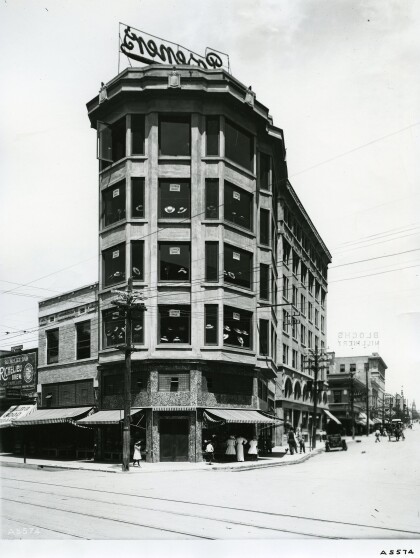
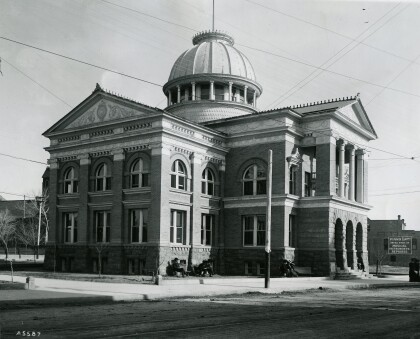
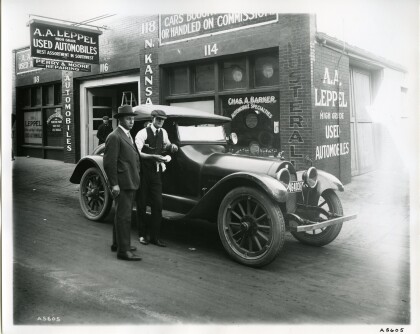
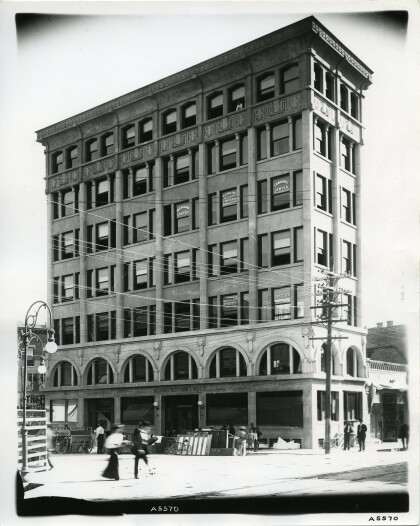
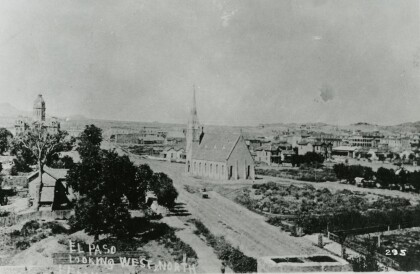
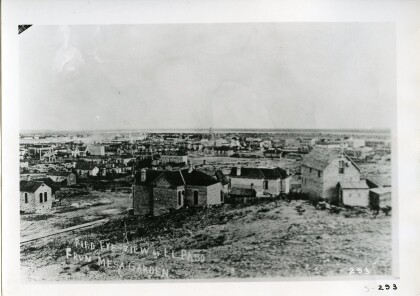
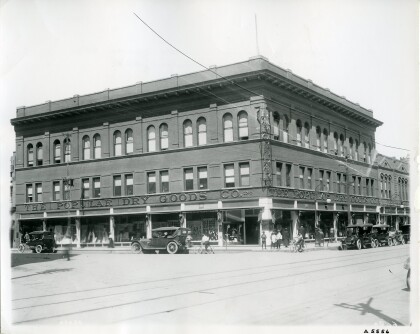
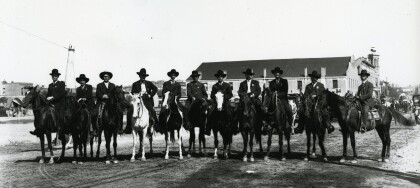
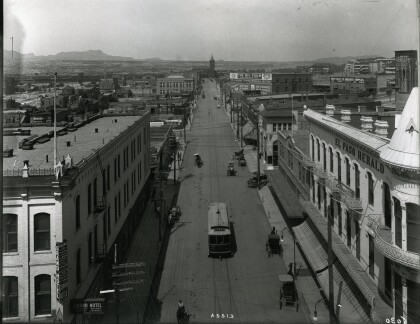
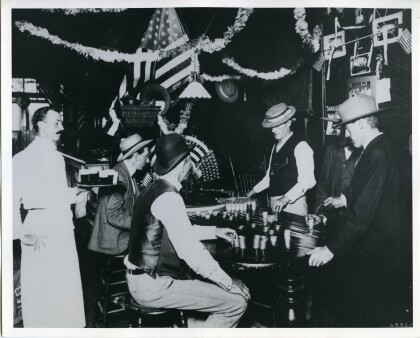
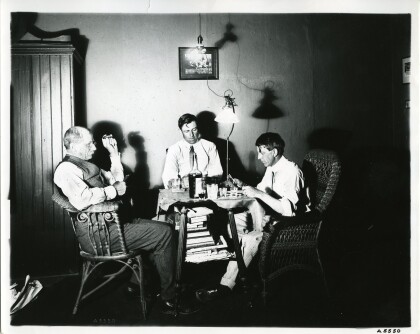
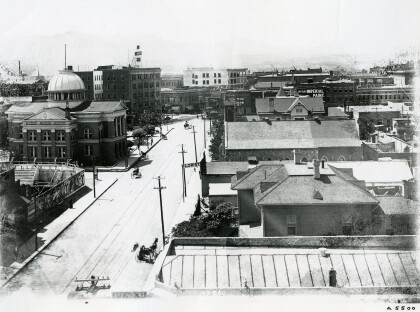
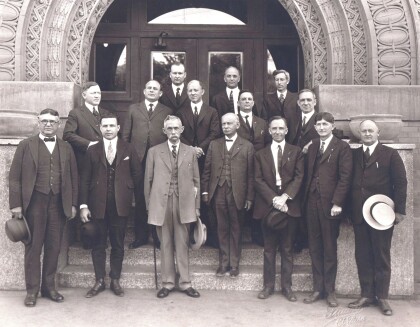
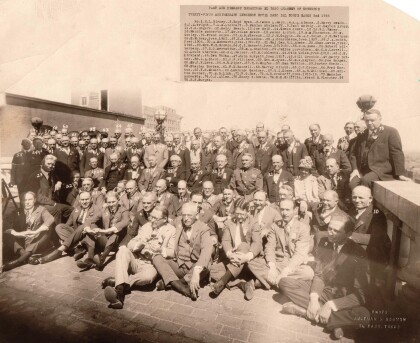
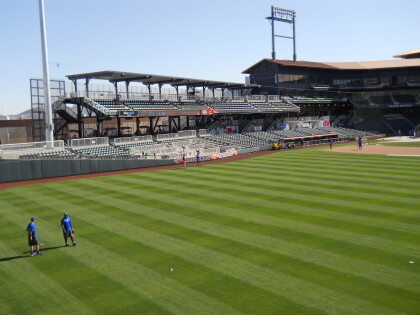
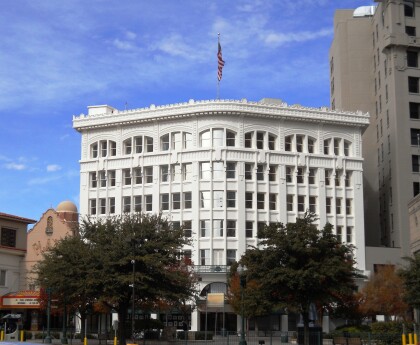

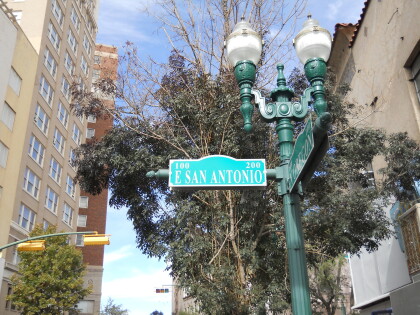
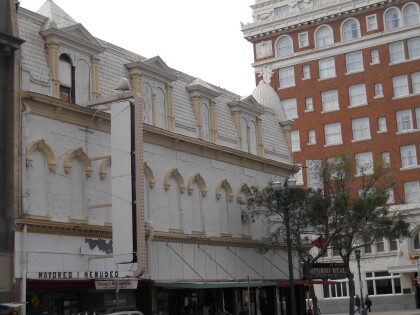
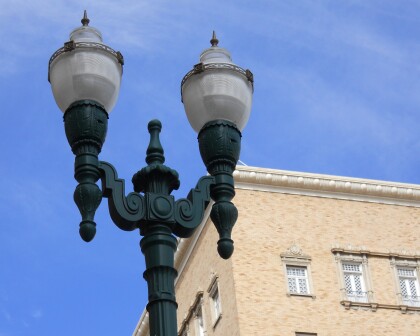
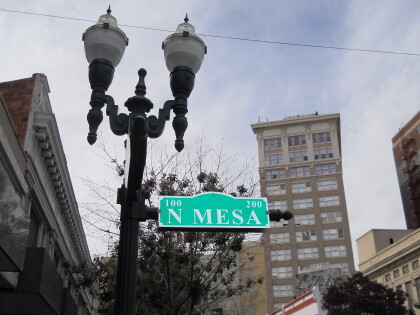
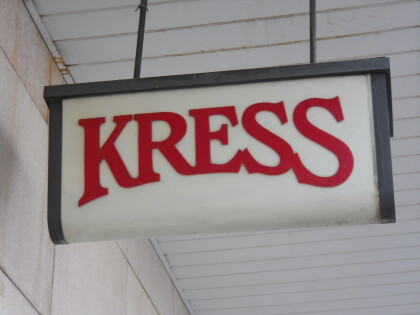
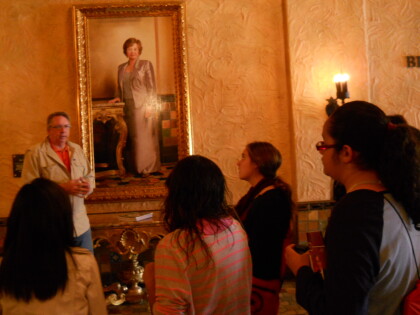
Comentarios
Hacer un comentario